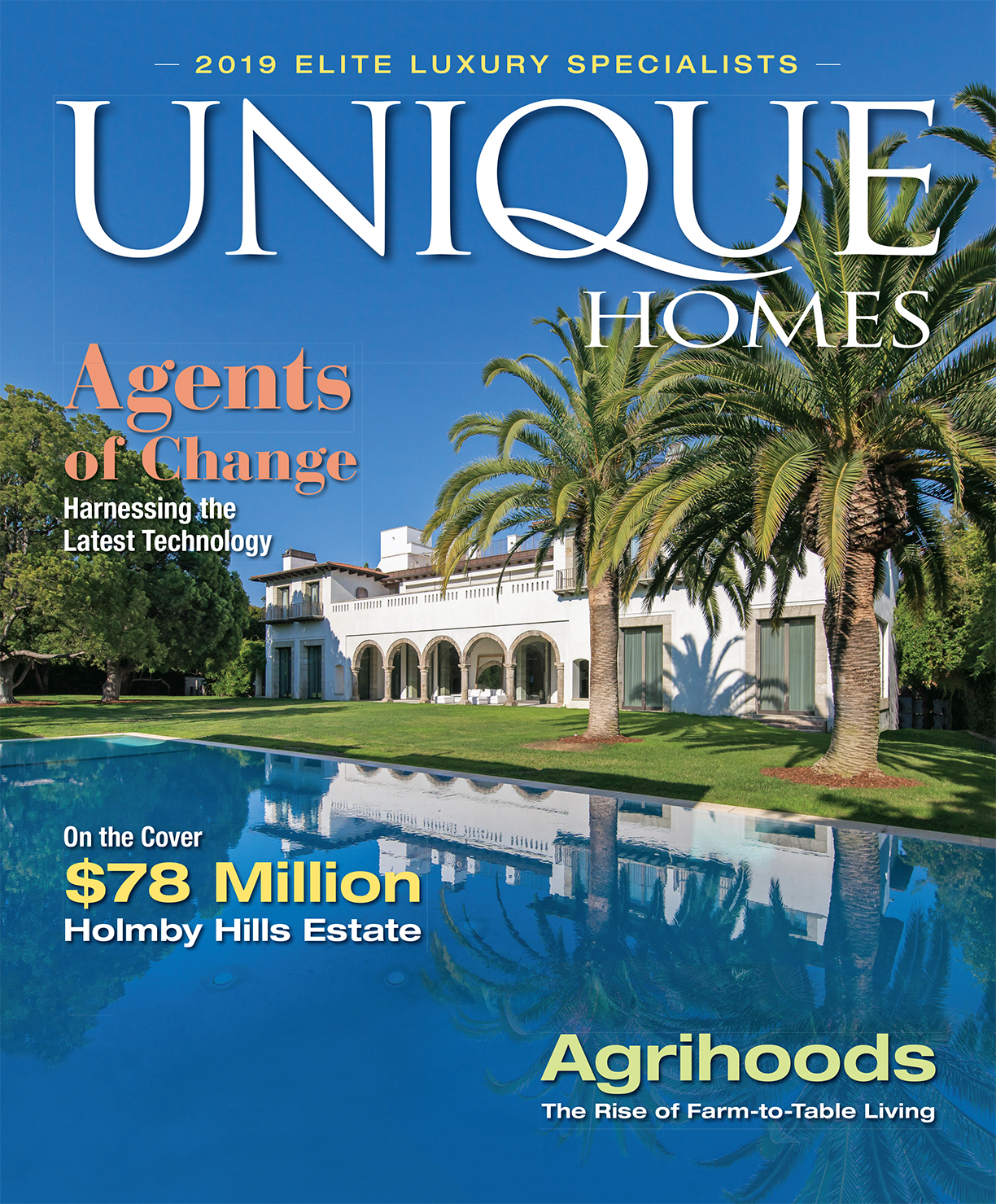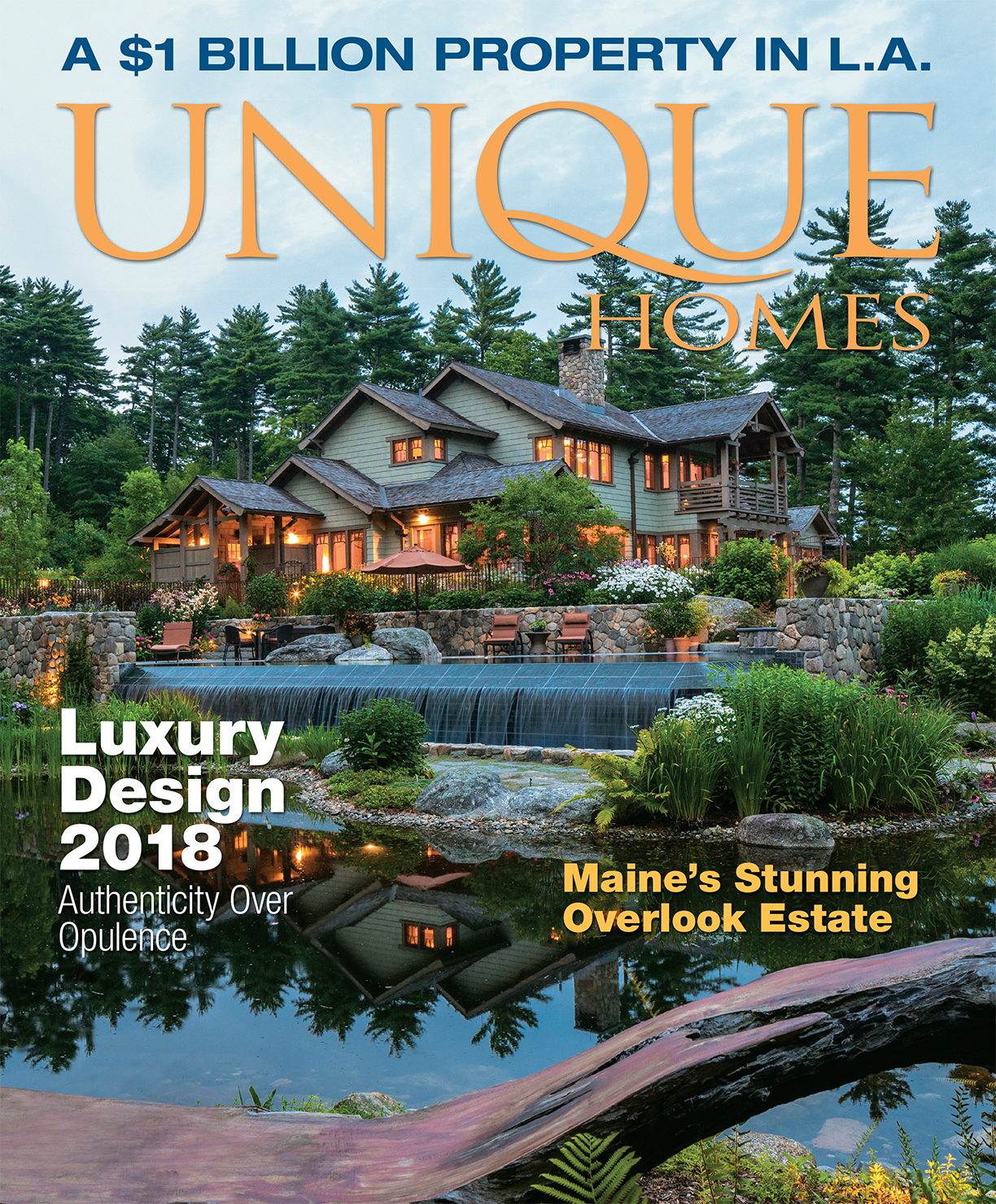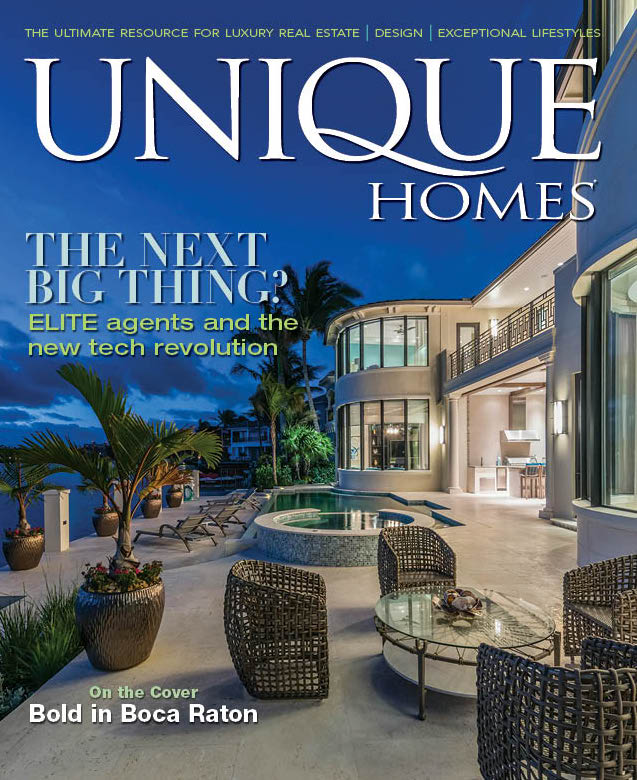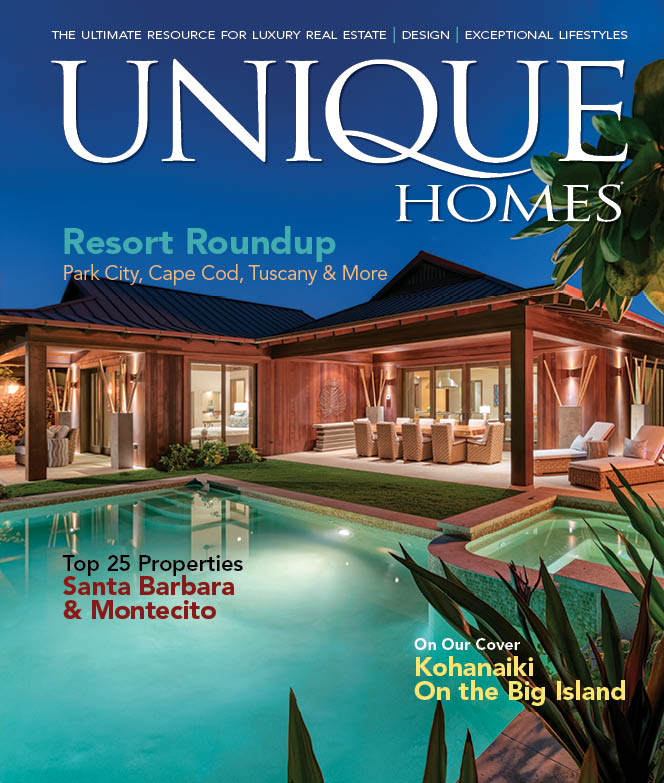

Debra Johnston
Berkshire Hathaway HomeServices
Georgia Properties
3500 Lenox Road NE, Suite 300, Atlanta, GA
404.312.1959 | DebraAJohnston.com
Listing by Debra Johnston
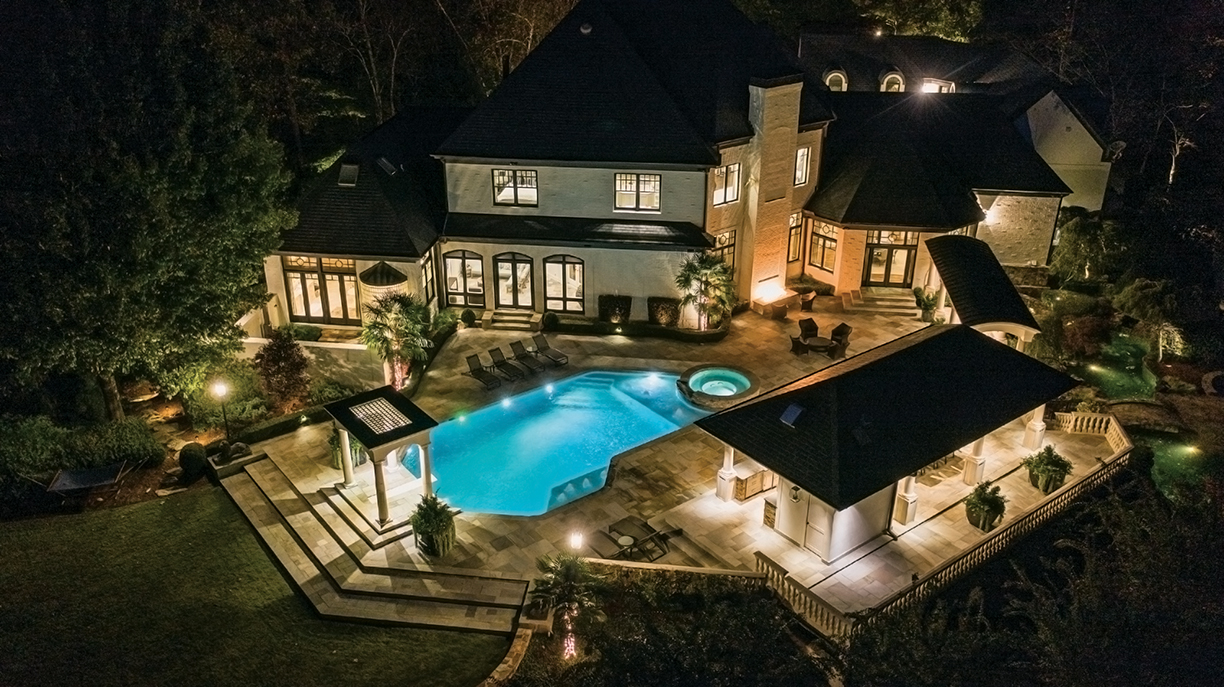
Atlanta, Georgia
40 Cates Road
Perhaps one of the rarest estates on over 8.4-plus acres available near Buckhead. Gated and completely fenced to the back gate, this unique and manicured property is surrounded by protected state land. The estate includes a lake with fountains, waterfalls, pergola, koi ponds, guest cottage and caretaker home. Entertain with tennis, batting cages, new pool and spa, outdoor dining pavilion and full bar. Enjoy the latest in Control4 home technology.
$7,950,000.
Debra Johnston originally appeared as an Elite Agent in the Unique Homes Spring ’19: Elite edition. See her page here.
A 87-acre property on Hampton Island, currently owned by actor and filmmaker Ben Affleck, is on the market for the first time since he acquired it.
By Alyssa Gautieri
The remarkable property overlooks North Newport River along the Georgia coast.
The plantation-style main house is complemented by a 10,000-square-foot guesthouse, screened-in summer cottage, equestrian center, private deep-water dock and 600 yards of waterfront.
Richard Mopper of Engel & Völkers Savannah is listing the property for $8.9 million.
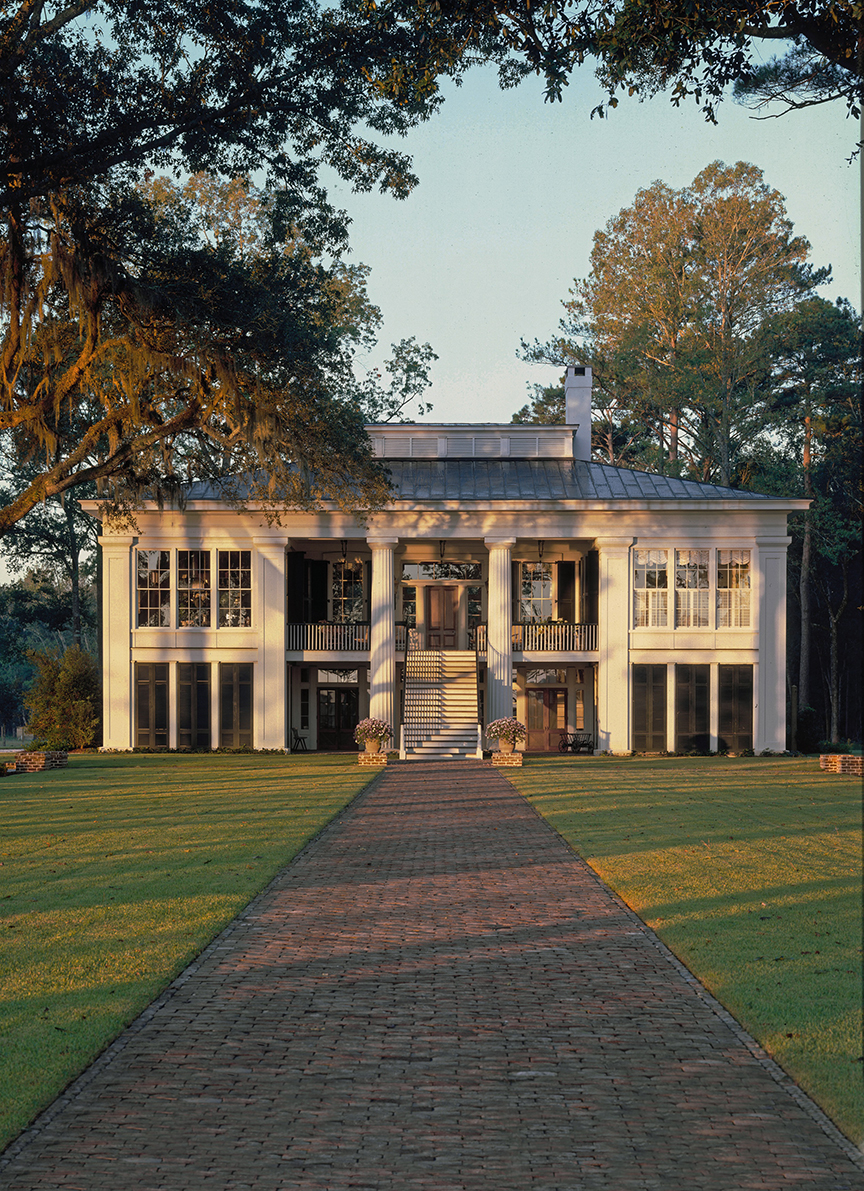
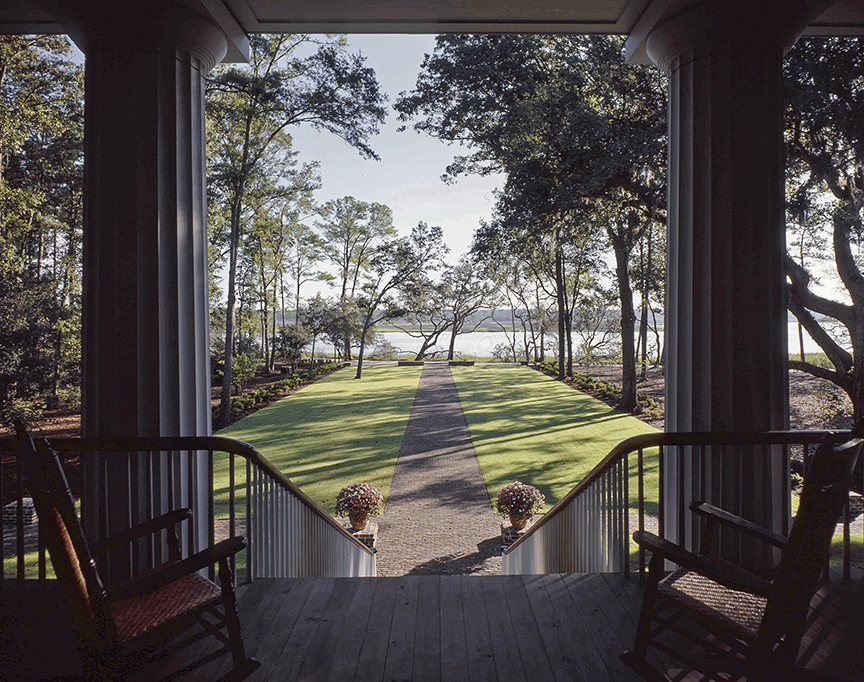
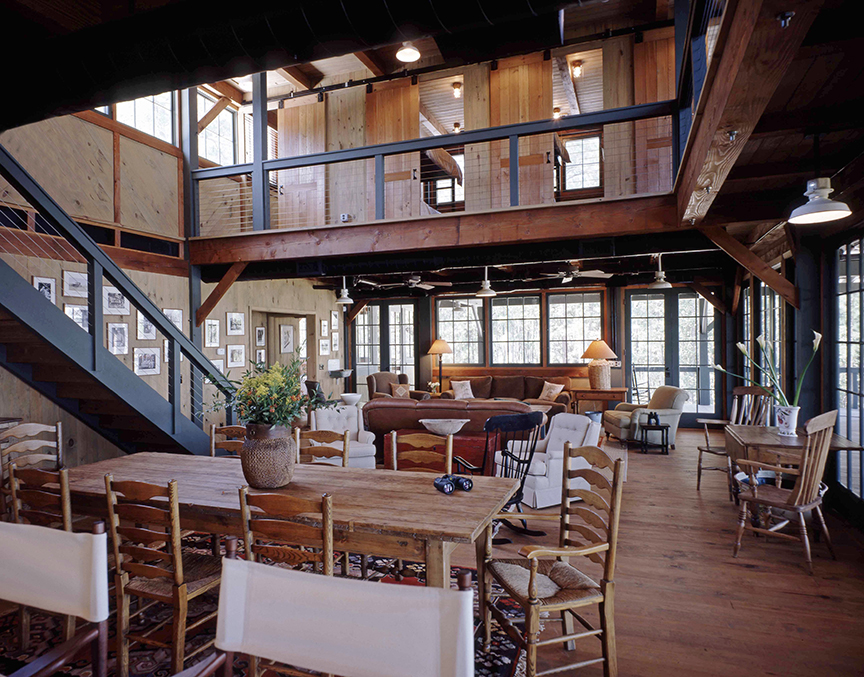
“We’ve had buyers look at the property and almost everyone has been looking for a second or third home,” Mopper notes. “The island is a great place for those who love the outdoors and enjoy outdoor activities, or for families that are looking for a getaway for a month or two a year.”
However, the island also appeals to those seeking year-round living as it offers both proximity to town and the advantage of privacy. “A lot of people don’t realize how marvelous the Georgia coast is,” Mopper says. “Hampton Island is so conveniently located — only 30 minutes from the Savannah airport — yet you are secluded in a beautiful, wooded area with the most gorgeous limestone roads. It’s that ambiance that drives people to this area.”
Oyster House Interior
“We’ve had buyers look at the property and almost everyone has been looking for a second or third home,” Mopper notes. “The island is a great place for those who love the outdoors and enjoy outdoor activities, or for families that are looking for a getaway for a month or two a year.”
However, the island also appeals to those seeking year-round living as it offers both proximity to town and the advantage of privacy. “A lot of people don’t realize how marvelous the Georgia coast is,” Mopper says. “Hampton Island is so conveniently located — only 30 minutes from the Savannah airport — yet you are secluded in a beautiful, wooded area with the most gorgeous limestone roads. It’s that ambiance that drives people to this area.”
While the 3-structure estate offers many features, Mopper says “the real draw is the main house. It has such elegance. It is really the perfect place to live and entertain in coastal Georgia.”
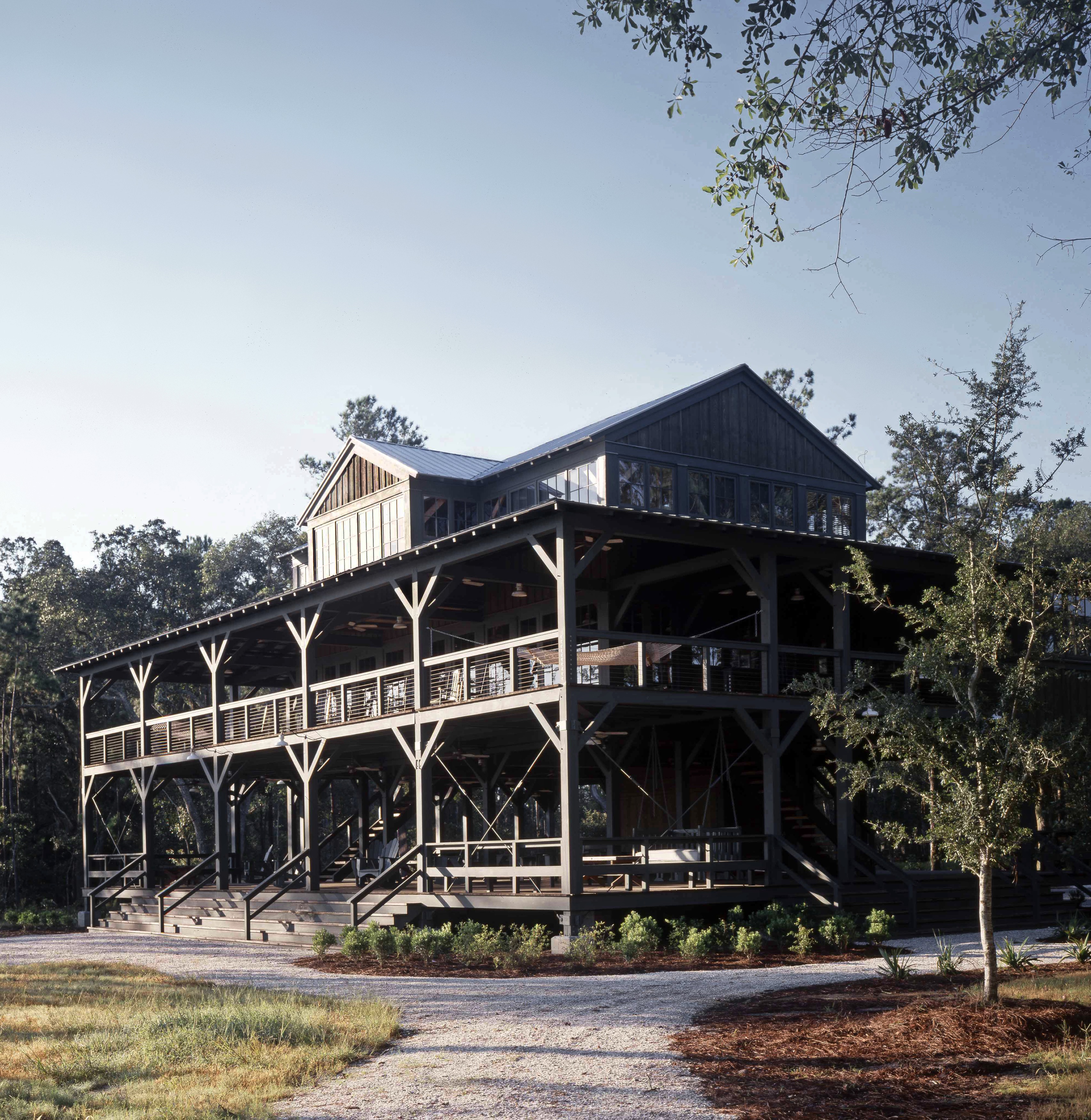
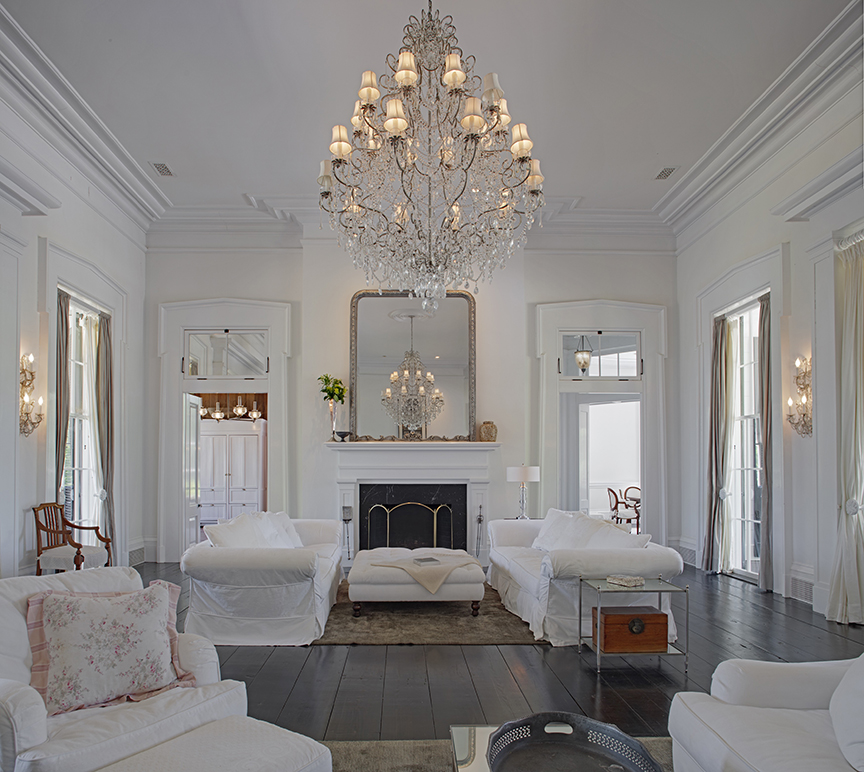
Known as the Big House, the 6,000-square-foot house was uniquely designed in the early 2000s to reflect the Antebellum era. From the 15-foot ceilings and wide-planked, reclaimed hardwood floors to the 18th century-style kitchen cabinets and massive arched fireplaces, architecture firm Historical Concepts carefully crafted each architectural detail.
Meanwhile, the exterior of the home is reminiscent of Greek Revival architecture with large columns, both front and rear verandas, brick walkways, outdoor seating and swings, and professional landscaping. “The home feels exactly like the era that it is meant to, yet with every modern convenience,” Mopper says.
The Big House Formal Living Room
While the main house is truly magnificent, there is much more beyond the verandas. Walk along the long brick path to the river, and you will be greeted by the “The Summer Cottage.” Surrounded by huge oak trees and views of the dock and river, the screened-in cottage is the perfect setting for a summer evening — whether it’s a fish fry, oyster roast or another outdoor gathering. Inside, the cottage boasts a unique, rustic style with a large fireplace, exposed beams and exposed, pitched ceilings.
Continue along the path, and you will approach “The Oyster House” on the river’s edge. Perfect for large gatherings, the rustic guesthouse offers six bedrooms with bunk beds salvaged from marine vessels, as well as three master suites. Outdoors, the wraparound balcony and expansive, rivers views make this space ideal for outdoor entertaining and dining.
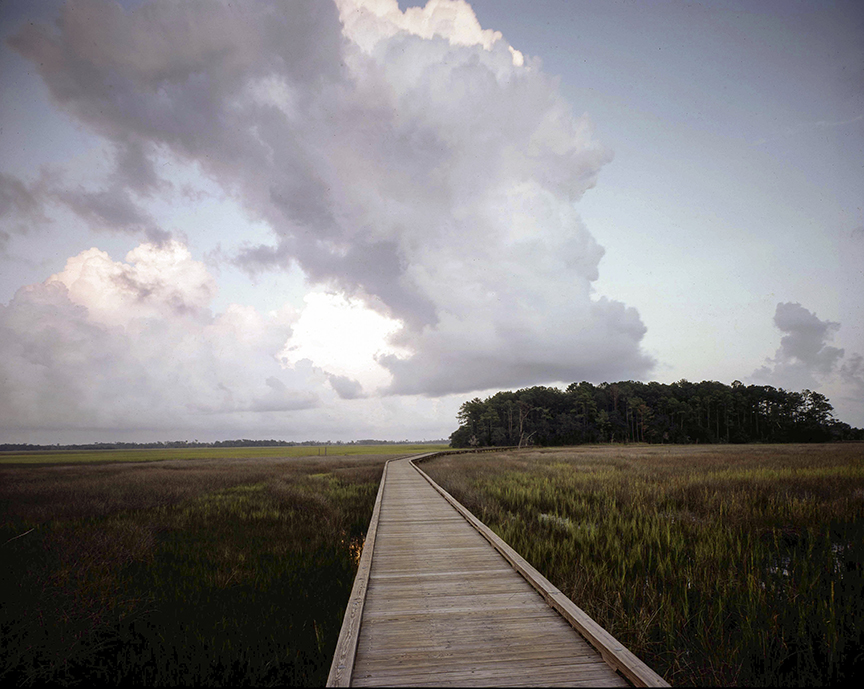
Photos by Richard Leo Johnson 2017
Courtesy Atlantic Archives
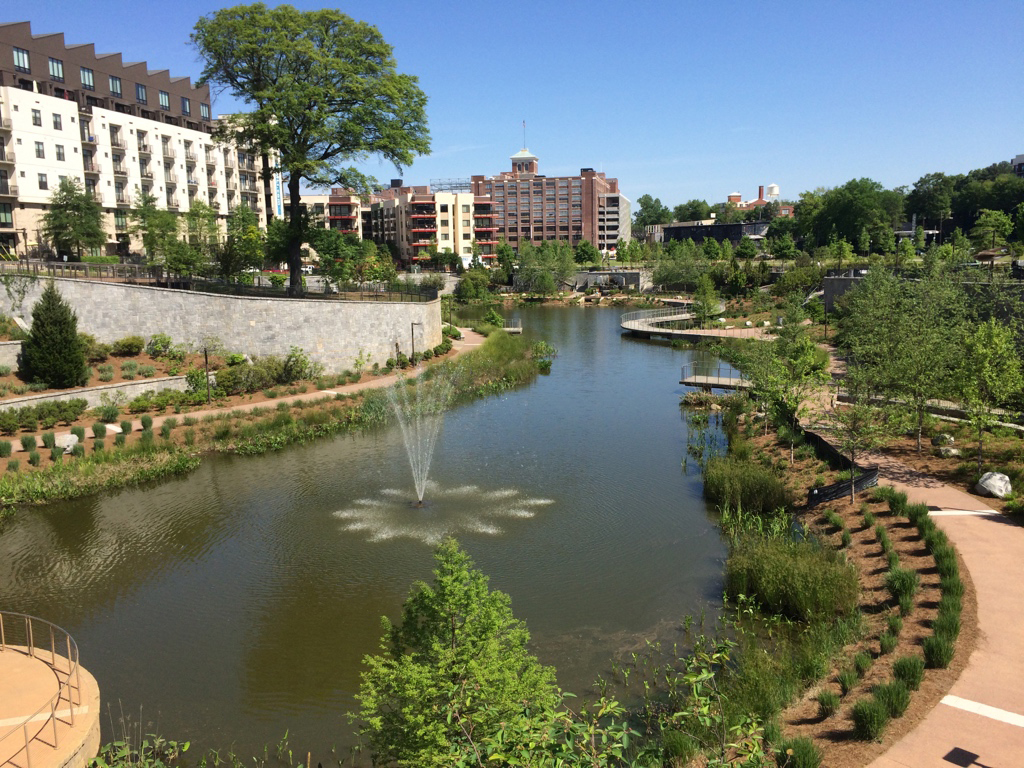
This early image shows the 11-foot-wide littoral shelf around the edge of the basin. All photos courtesy Tom Schurch.
The Atlanta BeltLine is one of the most comprehensive urban design efforts in the current era and is transformative for Atlanta, a city known for poor land use practices over the past quarter century. The BeltLine will ultimately connect 45 in-town neighborhoods through 11 nodes within a 22-mile loop of multi-use trails, light rail transit, and parks – all based on abandoned railroad corridors that encircle Atlanta. With regard to urban design and landscape architecture, a key individual who has guided the BeltlIne’s unfolding is its Principal Landscape Architect, Kevin Burke, ASLA. In a conversation between Burke and Thomas Schurch, Urban Design PPN Co-Chair and Professor of Landscape Architecture & Urban Design at Clemson University, Burke shares his experiences and insights concerning this remarkable achievement. Below are several sections from the interview:
How significant is the Atlanta BeltLine as an exercise in urban design and the landscape architect’s role in that regard?
The term “transformative” best describes the long-term outcomes. The Eastside Trail is indicative as close to 2 million people use this two-mile section annually and upon completion a significant number are expected to use the 1.5 mile extension to the south. Now that kids can ride their bikes the two miles without traffic conflicts, quite a few students use the trail to get to school. A 2 million square-foot building that was sitting unused was subsequently purchased by Jamestown Properties which invested over $300 million renovating the structure into food courts, commercial/office space, and residential, now the Ponce City Market. The 17-acre park also has seen over 2,400 new housing units that did not exist before 2008. $50 million in public and private funds were used to purchase/design/construct the park and, at the moment, the return on investment (ROI) from all the construction is above 10 and rising.
By definition is The BeltLine a “greenbelt?” If not, what would you call it?
While there are aspects of the project that would be understood as consistent with a greenbelt, it is so much more. The Atlanta BeltLine is a $4.8 billion multi-modal transportation project that promotes historic preservation, affordable housing, job creation, along with 33 miles of multi-use trails, and 1,300 acres of new or renovated public open space. It is a project that alters people’s perception of optional ways to get around the city, to socialize, recreate, and the various changes that will accrue from those opportunities.

In this more recent image, the plant material has established to the point of better defining the various spaces around the basin. In the background is one of the seven new apartment complexes near the park.
Regarding sustainability and resilience – green infrastructure, habitat, carbon sequestration, greenhouse gas emissions – how “green” is The BeltLine?
We have a very robust community engagement process that reaches out to neighborhood groups, Neighborhood Planning Units (NPUs generally encompass several adjacent communities), churches, businesses, and others. We are preparing to meet with the Enota Park neighborhood in SW Atlanta to initiate design by reviewing the master plan completed 10 years ago to deciding what elements are still acceptable. We’ll return with two conceptual designs for further input and then with the design development drawings for the selected option. … Our CEO has coffee with smaller groups to listen to their concerns and discuss various aspects of the project. Of course, he also reached out to business and government to keep them informed and to gather support. Finally, we have a large social media presence across multiple platforms that keeps people informed about scheduling of events and meetings.
This is a huge project that involves many diverse communities. What have been some of the best methods for community outreach at the ground level?
H4WP and D.H. Stanton Park opened in 2011-2012, and based on Department of Parks and Recreation statements that electricity is the primary hard cost in each park, we installed 23 and 33.5 Kw photovoltaic systems, respectively, to offset power costs in the two parks. The two systems were designed to offset 40 to 45 percent and 100 percent, respectively, of the costs in each park. In H4WP, we also integrated the photovoltaic system into a shade structure adjacent to a multi-use field. We [also] plant 700 to 800 trees per year as replacements for trees removed during construction phases.
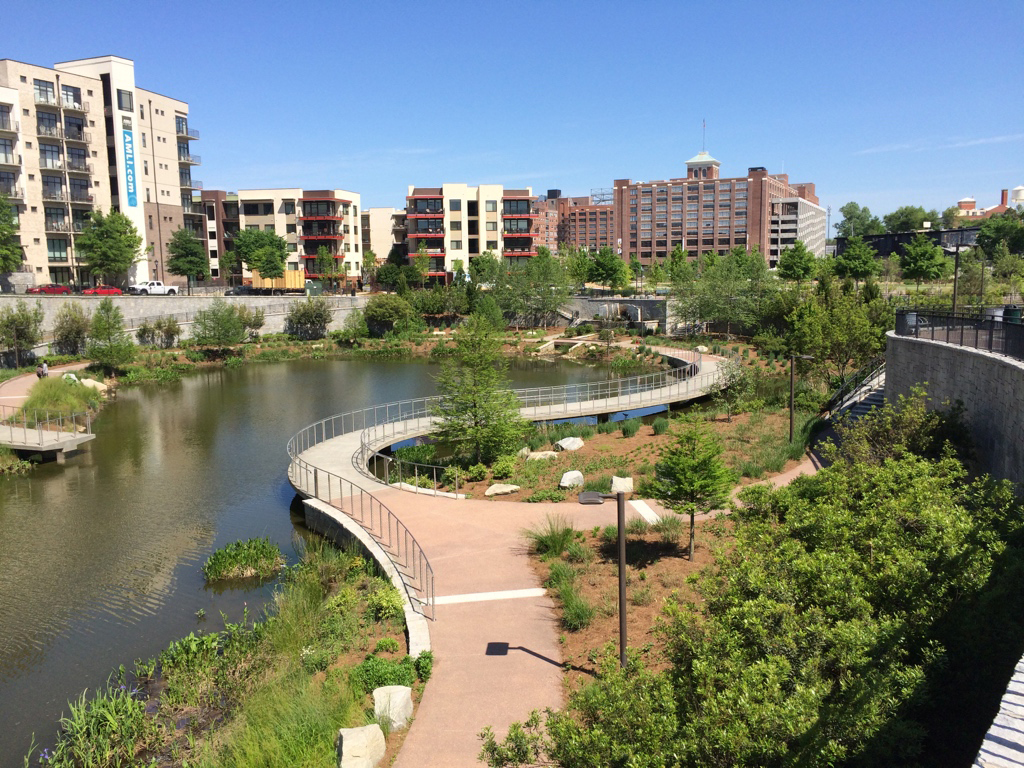
The $350 million Ponce City Market renovation in the background and the construction of Historic Fourth Ward Park support the nearby apartment building occupancy of over 90% on a consistent basis.
What would you like to add regarding The Beltline?
I think it is important to note that Atlanta BeltLine is now requiring that all parks designed for us will include SITES Silver or Gold certifications. We are the first public agency in the southeast to require utilization of SITES. Enota Park will be the first park under the new standard. … Lastly, I think in this day and age, we focus too often on the here and now. What Atlanta BeltLine seeks to do is, at its core, create a legacy project that will serve the residents and visitors to Atlanta for the coming decades and beyond. It is critical that we as landscape architects not lose track of that timeframe in all the decisions we make and what urban design in landscape architecture can offer.

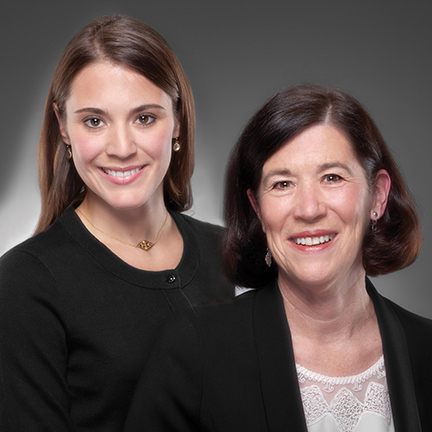
Julie Barnett & Leigh Barnett
Harry Norman, REALTORS®
141 S. Main Street, Clayton, GA 30525
O. 706.212.0228 | J. 404.697.3860 | L. 404.931.3636 | julie.barnett@harrynorman.com
leigh.barnett@harrynorman.com | www.lakeburtonhome.com
Featured Listing by Julie Barnett & Leigh Barnett
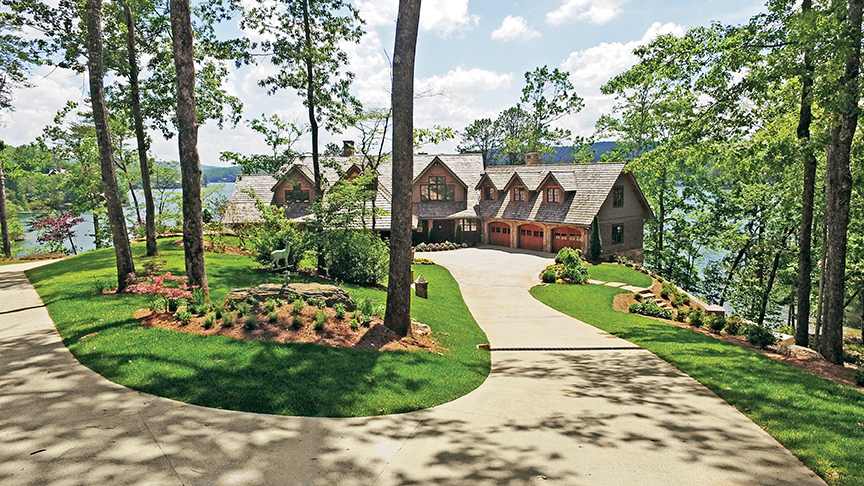
TIGER, GEORGIA
57 Cody Lane
This 7-bedroom, 7.5-bath stately Lake Burton retreat is gracefully positioned on manicured grounds enjoying long range lake & mountain views. The 2-story great room features a vaulted ceiling, reclaimed beams, oak flooring, stone fireplace & floor-to-ceiling windows framing lake views. A lakeside porch acts as an outdoor living room with fireplace, built-in pizza oven and dining area. The chef’s kitchen is equipped with professional appliances, a large island & cozy breakfast nook with fireplace. The terrace level features a family room with fireplace, full kitchen, wine cellar, game room with wet bar & lakeside covered porch. Amenities include: master on main, 3-car garage, detached workshop, 7 masonry stone fireplaces, fenced garden, dog run, 2-stall boathouse.
$5,900,000.
Julie Barnett & Leigh Barnett originally appeared as Elite agents in the Unique Homes Spring ’18: Elite edition. See their page here.


Rhonda A. Smith
Algin Realty, Inc.
150 W. Washington Street, Madison, GA 30650
O. 770.616.4460 | C. 706.319.7980 | rsmithspa@yahoo.com | www.alginrealty.com
Rhonda is a member of Morgan County Rotary, a Board Member of the Madison – Morgan Boys & Girls Club, and the local Magnolia Garden Club. Rhonda enjoys working with both buyers and sellers where she is knowledgeable in the Madison, Rutledge, Lake Oconee, Athens and surrounding counties. She is a certified Real Estate Negotiating Expert, a member of the Institute of Luxury Home Marketing, and a Seniors Real Estate Specialist. Whether you are a first time home buyer or retiree looking to downsize, it is her pleasure to assist from starting with a lender to beyond the closing. Her motto is “there is no home too small or too big — there is the right fit for everyone!” Rhonda is always helping families plant roots one home at a time!
Featured Listing by Rhonda Smith
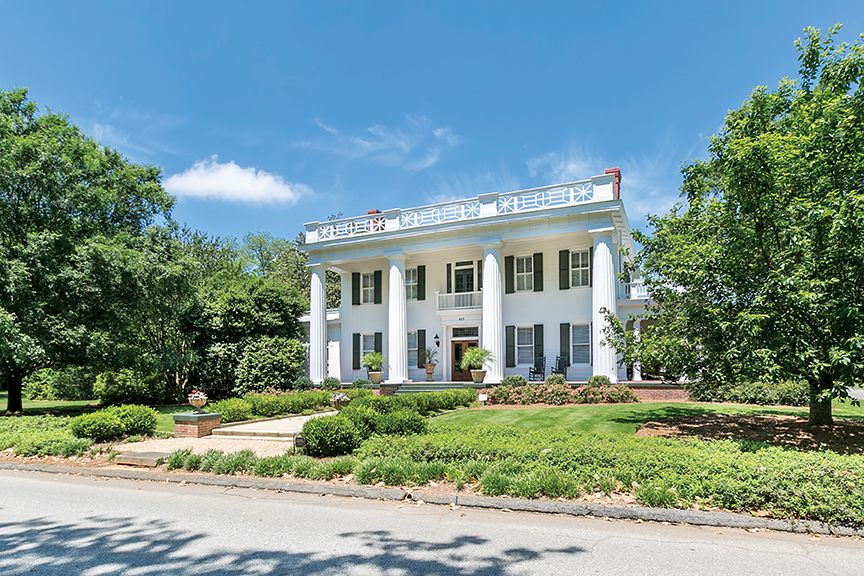
MADISON, GEORGIA
Joshua Hill House
The most historically significant home in Madison, the Joshua Hill House perfectly depicts the slow, luxurious lifestyle of Southern living. This Greek Revival sits on its own block surrounded by gardens, a potting shed, guesthouse and a beautiful pecan grove.
$3,000,000.
Rhonda Smith originally appeared as an Elite agent in the Unique Homes Spring ’18: Elite edition. See her page here.
No2 Opus Place, a luxury development in Atlanta, Georgia, encompasses more than 46,000 feet of private amenities, including a spa and wellness haven, artful experiences and Mozart’s Club Level.
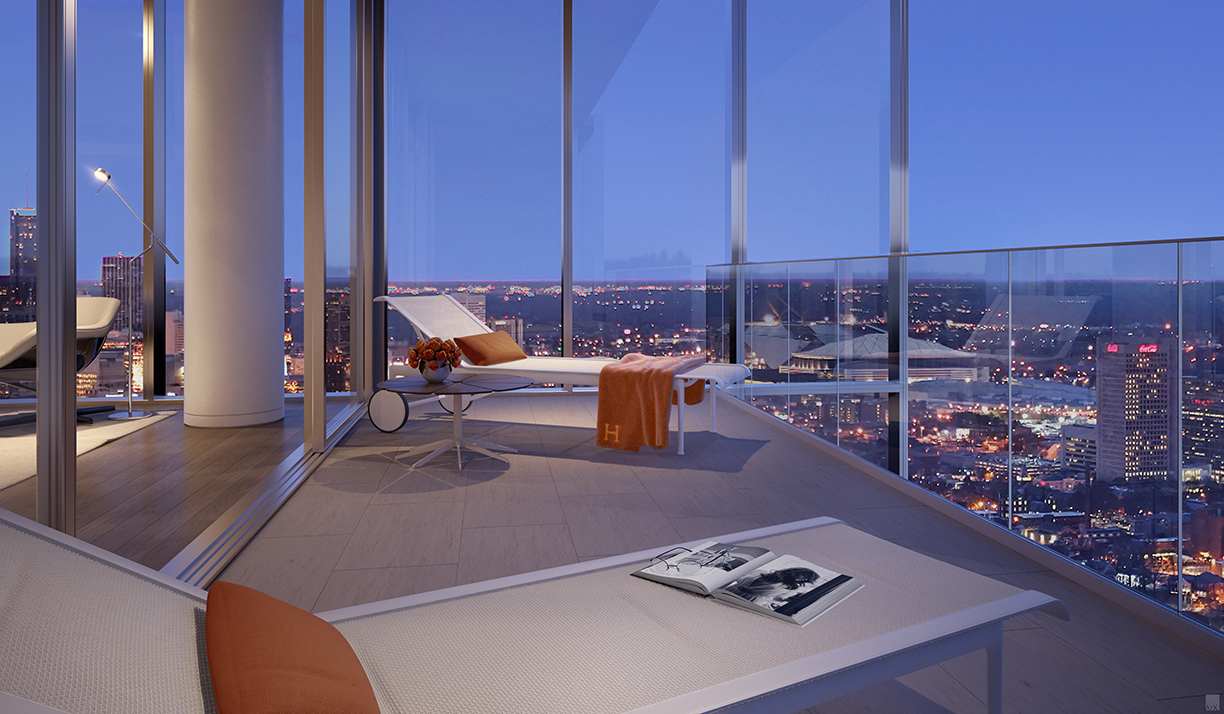
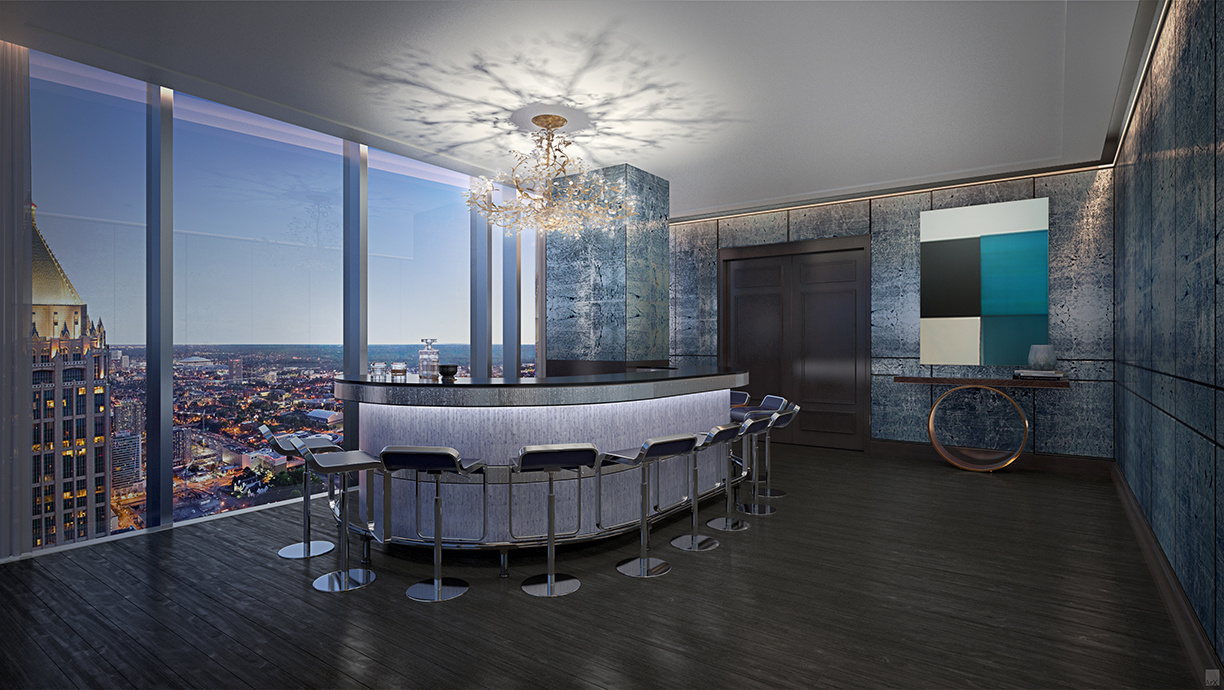
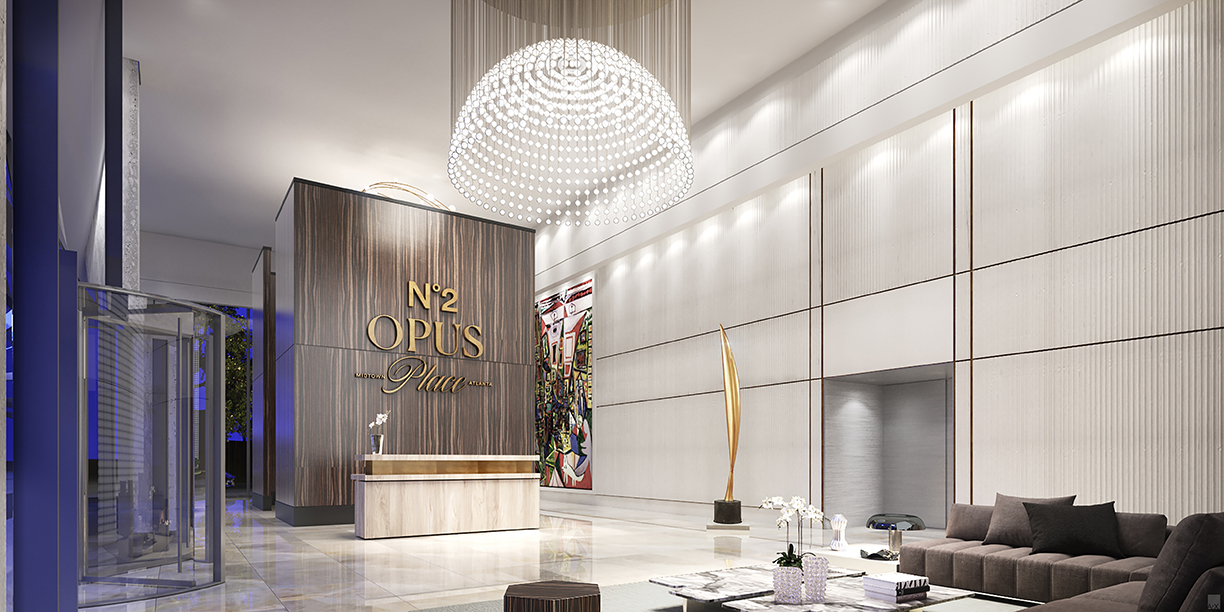
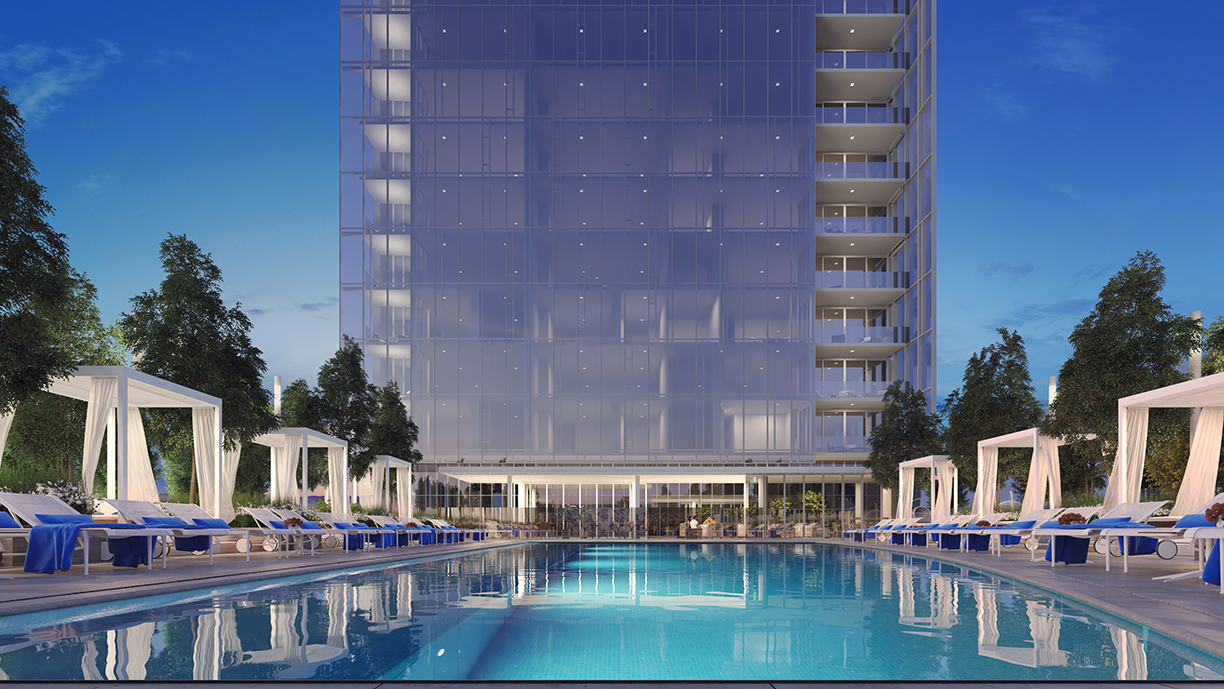
No2 Opus Place, famed for its record-setting plans to become the tallest residential tower along the Midtown Atlanta skyline, will be known for more than its height in the near future. The luxurious development is soon to be the most highly amenitized condominium building in Midtown, encompassing more than 46,000 feet of private amenities spread over three floors with endless city views and top-of-the-line finishes and features. No2 Opus Place wrote 20 contracts during the month of March and the project is in the site work phase of construction.
At only 48 cents per square foot, No2 Opus Place’s monthly homeowners’ association fees will offer residents a well-appointed lifestyle with access to an outstanding number of in-house amenities, without the high rates normally associated with luxury living.
“The developer thoughtfully curated No2 Opus Place to incorporate a fully loaded line-up of amenities, services and gathering spaces at a reasonable cost to the homeowner,” said Lori Lane, senior vice president of Berkshire Hathaway HomeServices. “Right now is a great time for buyers to discover No2 Opus Place — we’re currently in our pre-sale phase which offers the best pricing options and choice of residences.”
The Opus Club, a finely selected collection of best-in-class amenities, will provide residents and their guests the ultimate in exclusive hospitality, all under one roof.
Situated atop a fine dining restaurant, the private 8,200-square-foot arrival experience will welcome residents home with an on-site bellman and full valet service. The grand entryway leads residents into the Entrance Suite, featuring a double height space accentuated by a contemporary crystal chandelier and blue-chip art collection. Also included in the arrival is access to on-site parking, dry and cold package storage and on-site property management. A 24-hour Concierge is available to offer residents services typically found in a boutique hotel. Additionally, No2 Opus Place will employ a full-time Lifestyle Curator to plan events such as wine tastings and movie screenings.
Ascending upwards through the tower, residents will experience a 26,000-square-foot health and wellness facility featuring both indoor and outdoor amenities. The outdoor area will provide ample entertainment space for residents and their guests. From the resort-style pool featuring a massive movie wall, waterfall and private cabanas to alfresco dining spaces with fire pits and BBQ grills to a juice bar in an open-air lounge, the exterior amenities cater to every aspect of an active, stylish lifestyle. The outdoor area also includes a covered lap pool perfect for catching the sunrise during exercises, an outdoor kitchen and a dog run.
An on-site Wellness Director and Spa Attendant will help guide residents’ wellness routines within the indoor and outdoor treatment rooms. Sauna and steam rooms and a state-of-the-art gym, along with a Pilates and yoga studio, are also a part of the rejuvenating spa and wellness center.
Near the pinnacle of the building lies Mozart’s 41st, the 8,900-square-foot Club Level featuring a 23-seat IMAX Screening room, ultra-lounge, cocktail bar, demonstration kitchens, a culinary tasting lounge and a wine tasting and storage space. For residents looking for a more intimate experience, access to private guest suites, a private dining room and a library is also available.
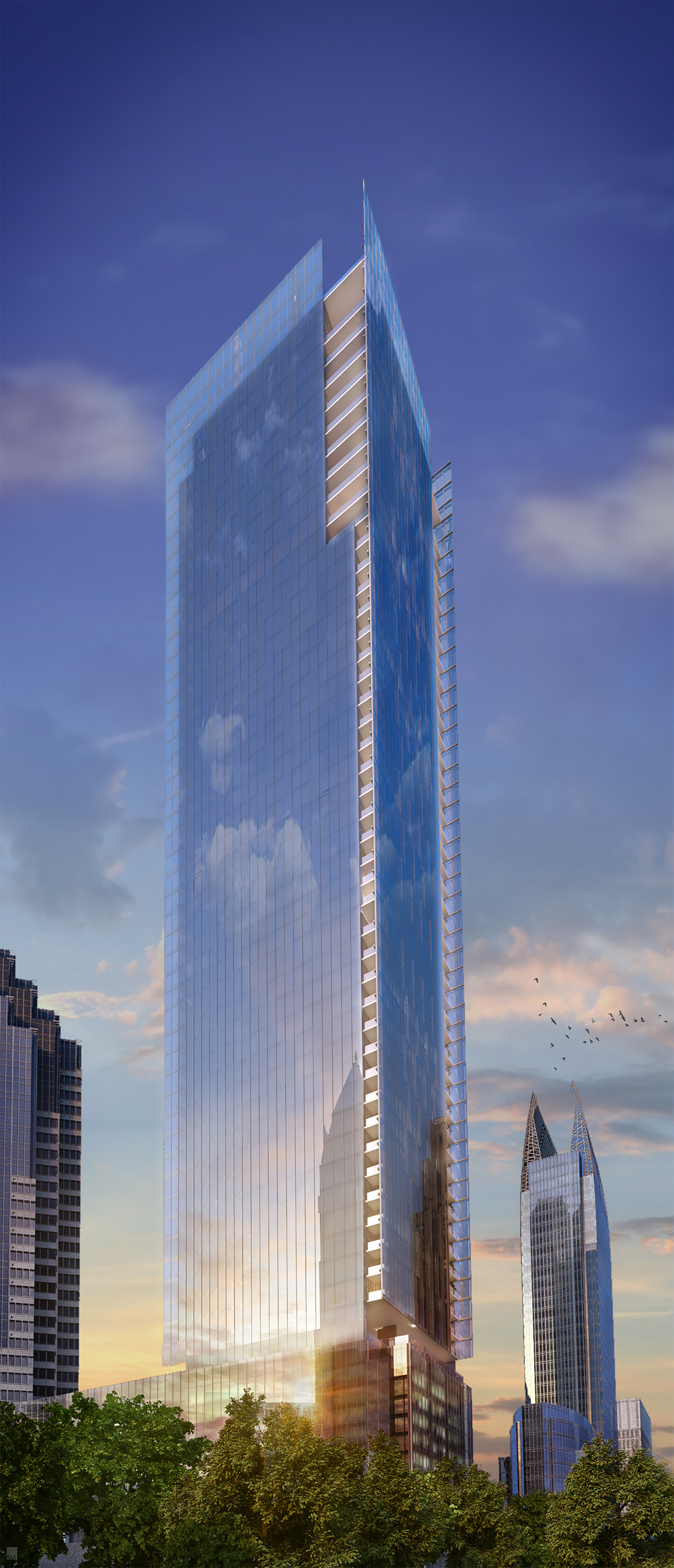
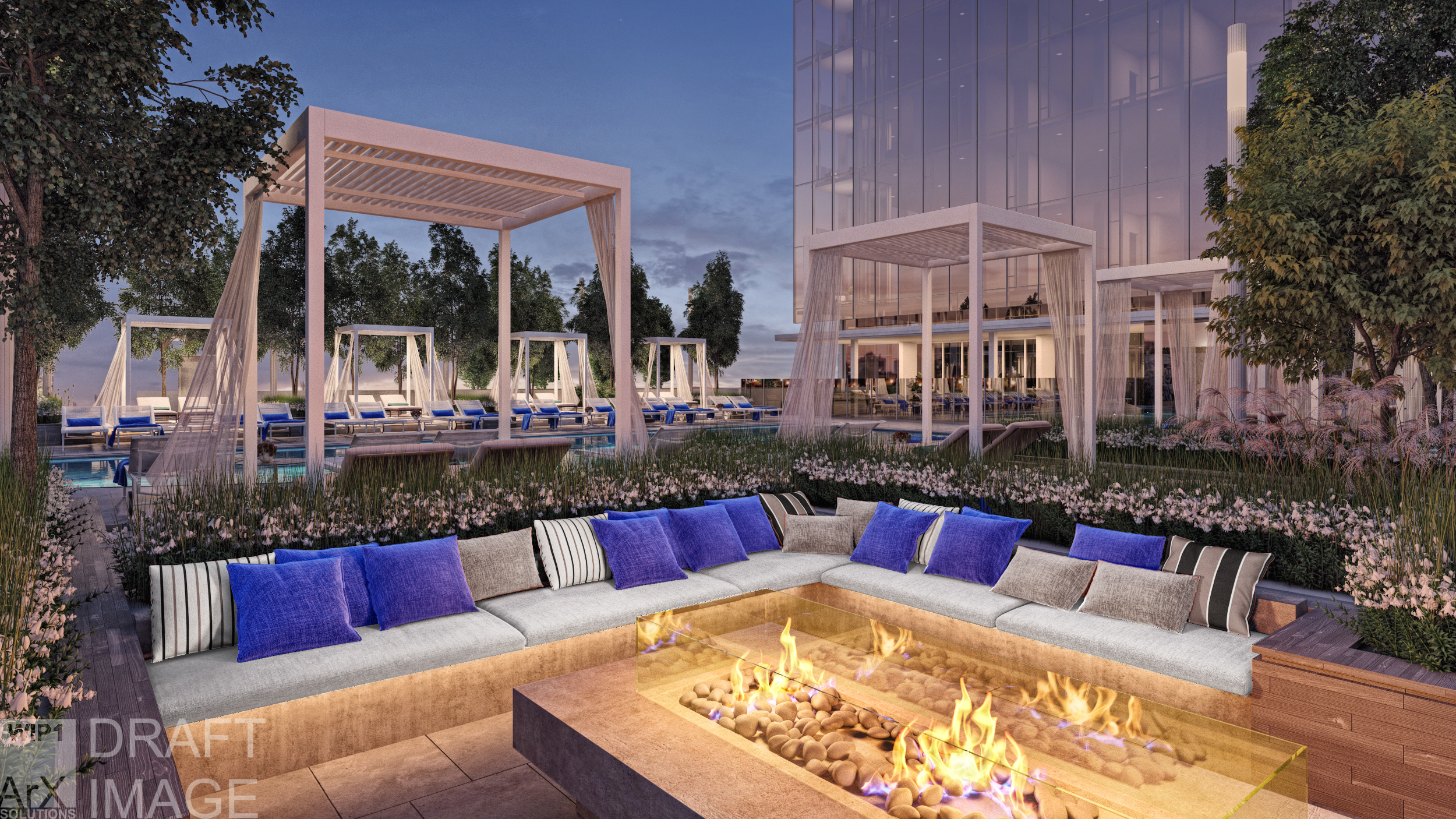
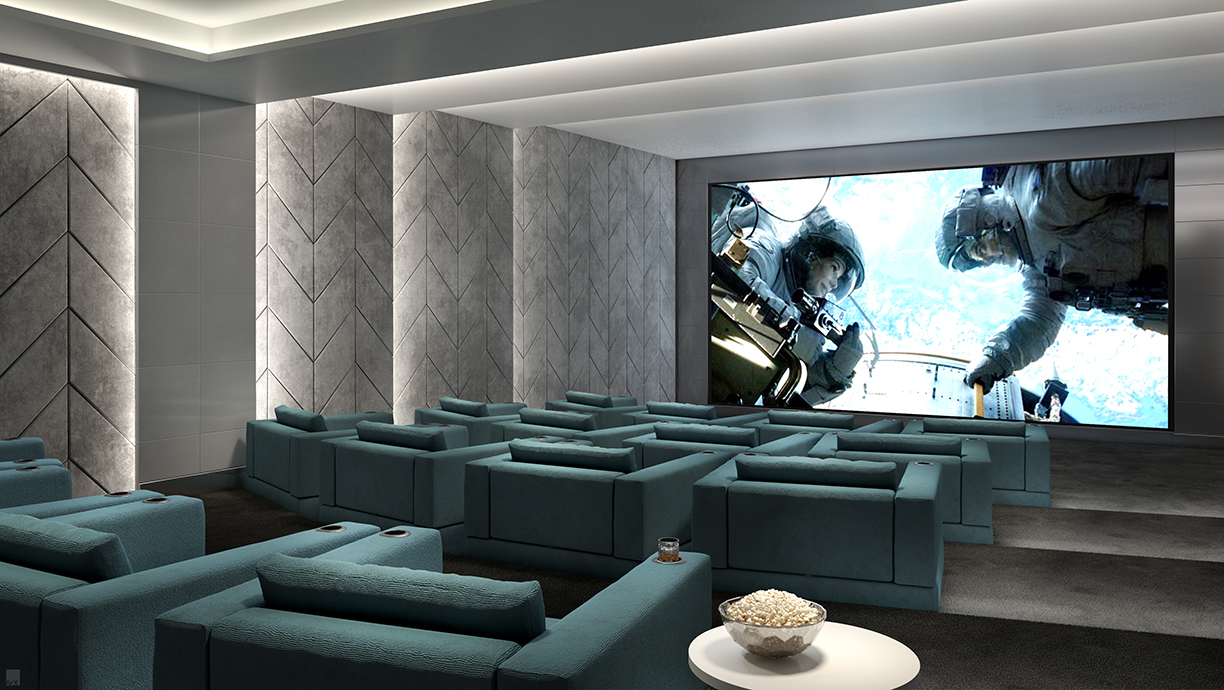
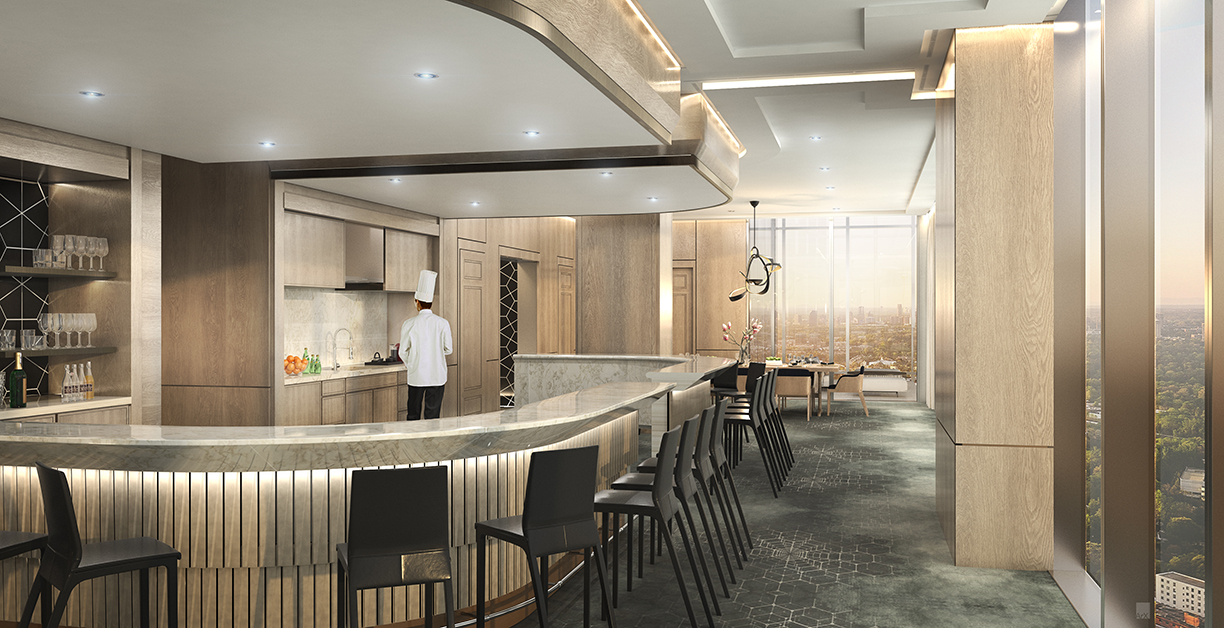
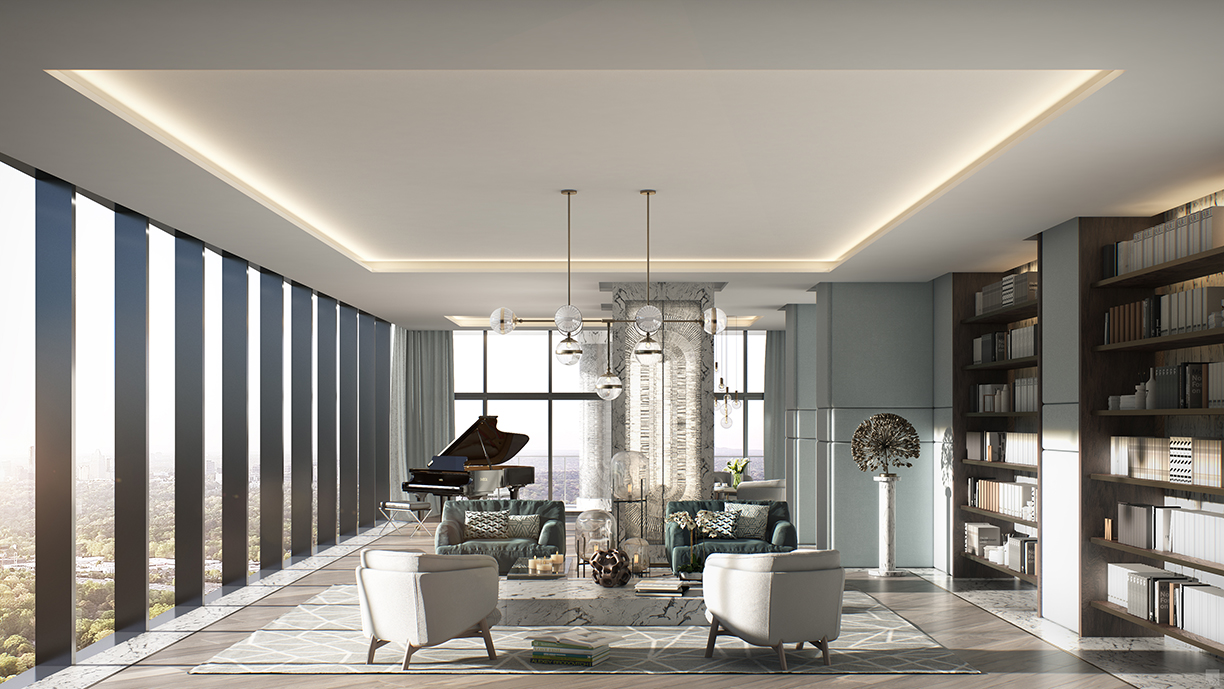
Photos courtesy of ARX Solutions
From the lively streets of Chapel Hill, North Carolina and the serenity of Northern Georgia to the stoic desert landscapes of Arizona, homes that favor resort-style luxury are in demand.
By Kristen Ordonez
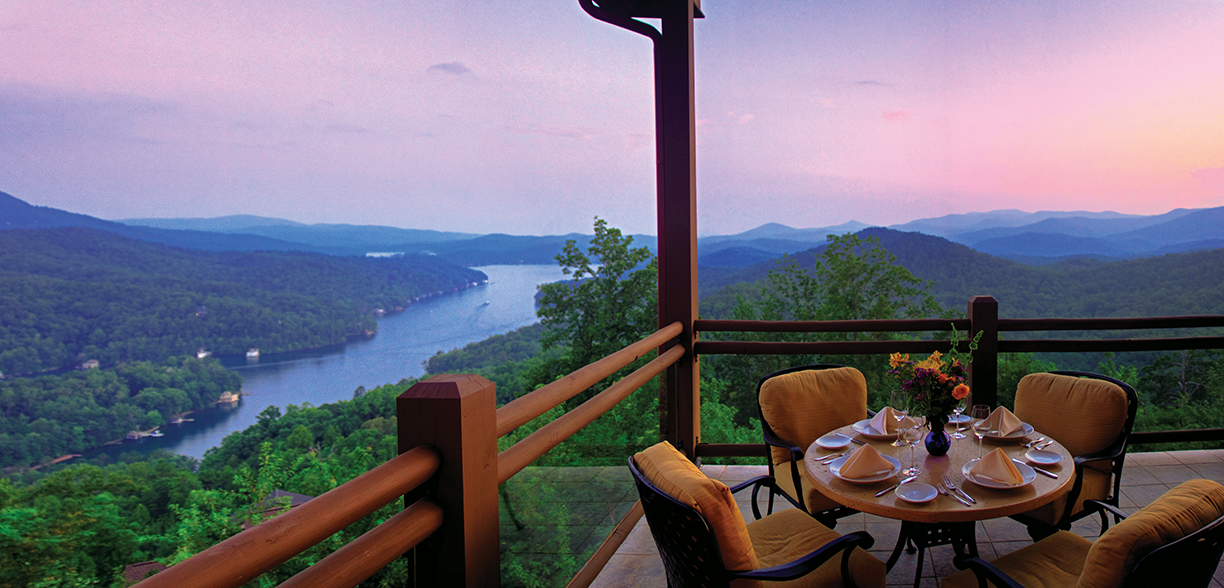
The Waterfall Club at Lake Burton
Situated in the mountains of Northern Georgia, The Waterfall Club provides social and golf memberships and a wide variety of activities and services. This pristine resort is a focal point for buyers interested in homes within the Lake Burton area, which provides the most luxurious real estate options, according to Julie Barnett, Realtor from Harry Norman, Realtors.
“Rabun County sits in the foothills of the Appalachian Mountains,” Barnett says. “It is 67 percent national forest, so there is very little development on the mountains. There is hiking, biking, shopping in the small boutiques in Clayton and a variety of great restaurants.”
For those who have already staked their claim within the area, the perks of living there only seem to grow with Five-Star dining, two marinas and the Bent Grass fairways, which offer unsurpassed beauty and play ability. The current highest listing in Waterfall is $3.5 million, with other available homes ranging from 300 to 10,000 square feet.
The Triangle of North Carolina
One area that is used to the hustle and bustle of a resort-type atmosphere is the Triangle area of North Carolina, specifically the cities of Cary, Chapel Hill, Durham and Raleigh. Realtor Jennifer Guyer-Stenner of Fonville Morisey Realty notes that this area is considered a “miniature Silicon Valley and encompasses three premier universities (UNC, NC State, and Duke),” resulting in “a true melting pot” of residents who frequently flock to sporting events, recreational lakes, and golf courses such as Governors Club, Wakefield and Northridge.
With 750 luxury homes on the market in the Triangle area priced above $750,000, and the highest priced listing at nearly $7 million, Stenner affirms that this location will satisfy the needs of any discerning buyer.
Arizona
Something important to consider when purchasing a home is to find a “real estate professional who knows where the values [and] where the safest investments are,” according to Realtor Frank Aazami. Both Aazami and Lisa Westcott-Wadey, who thrive as Realtors with Russ Lyon Sotheby’s International Realty in Arizona, know the values that can be found in their areas.
“Arizona has many attractions and outdoor activities that most don’t realize,” Wadey states. With up-and-coming residential opportunities like the new Ritz-Carlton Residences in Paradise Valley and tech industries in Mesa and Chandler, both local out-of-state buyers seem to be flocking toward The Grand Canyon state for resort communities.
Whether your home of choice is the close to $20 million home in Silverleaf or something lower on the spectrum, the market is open, but fierce. According to Wadey, “buyers want what they want and they are not willing to settle.”
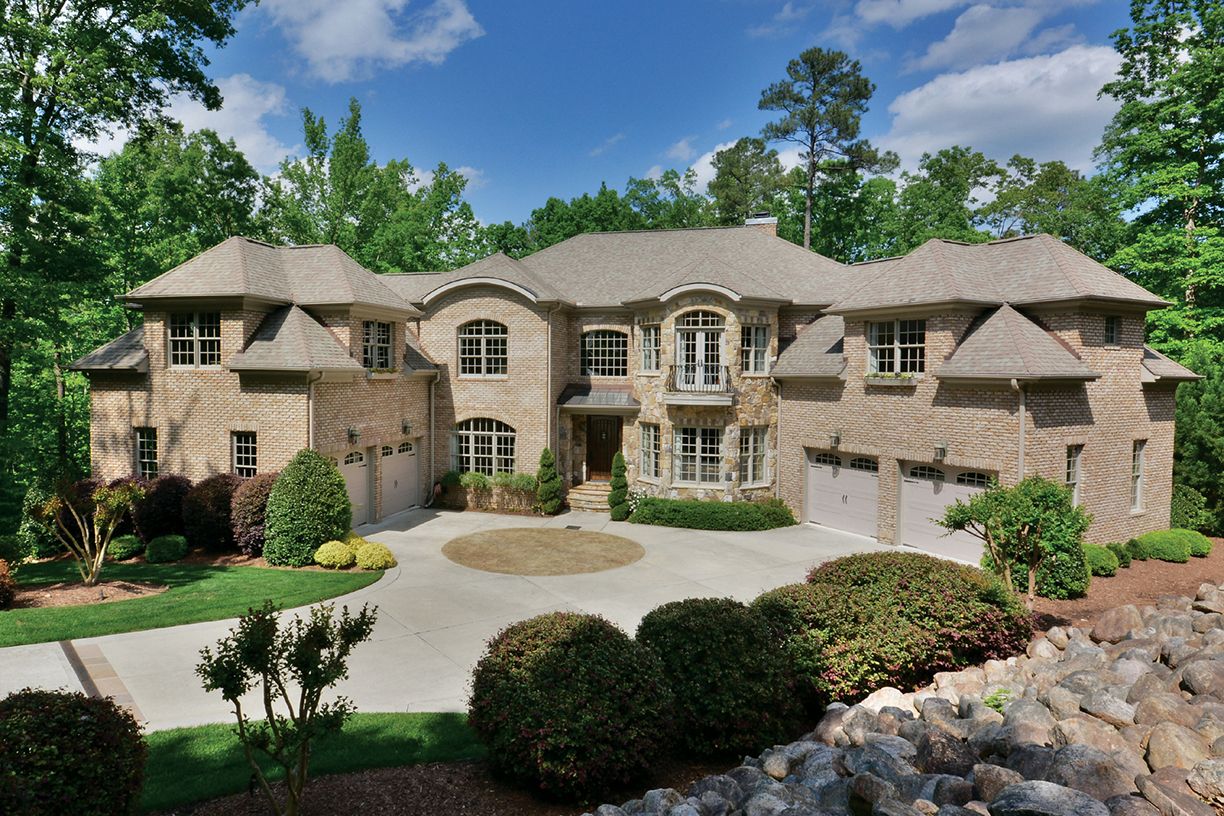
courtesy jennifer guyer-stneer, fonville morisey realty
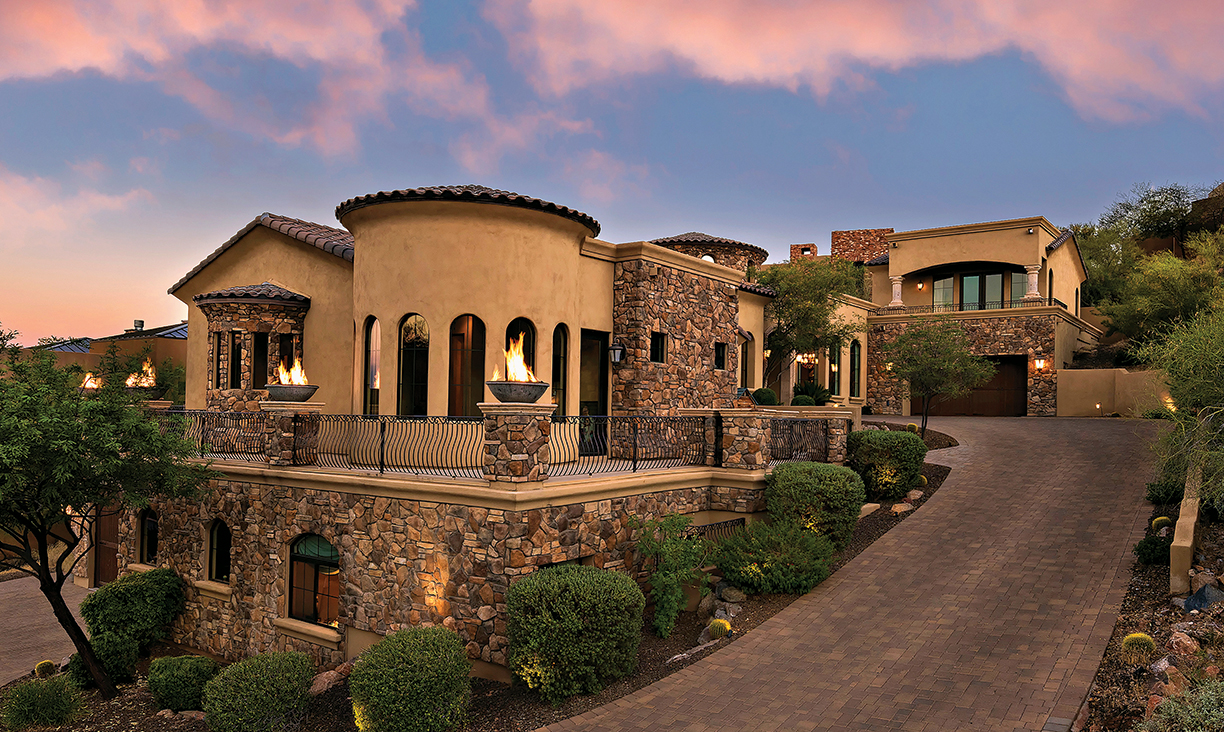
photo ©thompsonphotographic.com 2015
courtesy Lisa Westcott-Wadey / The W. Group
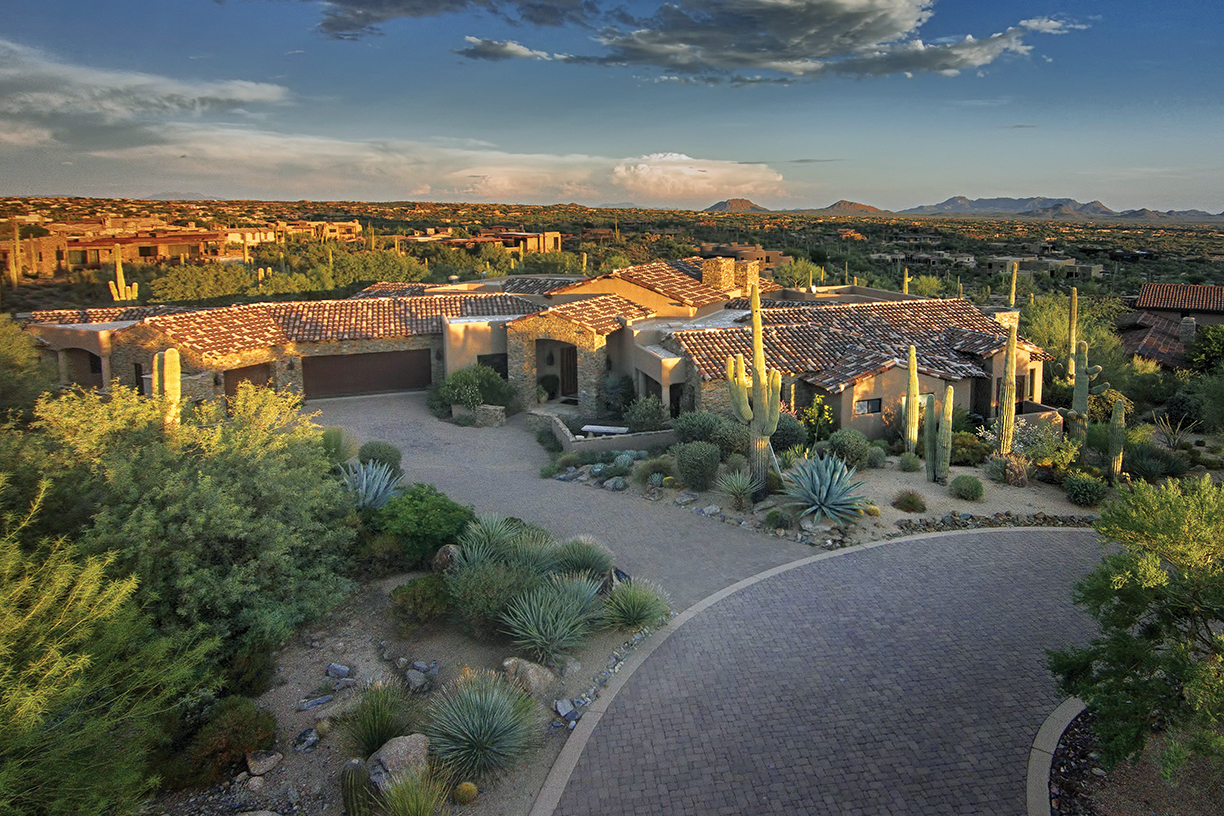
courtesy Frank Aazami/tourfactory
In 2017, Unique Homes is traveling the U.S. to find the dominant stories in each region of the country — This issue covers the South.
By Camilla McLaughlin
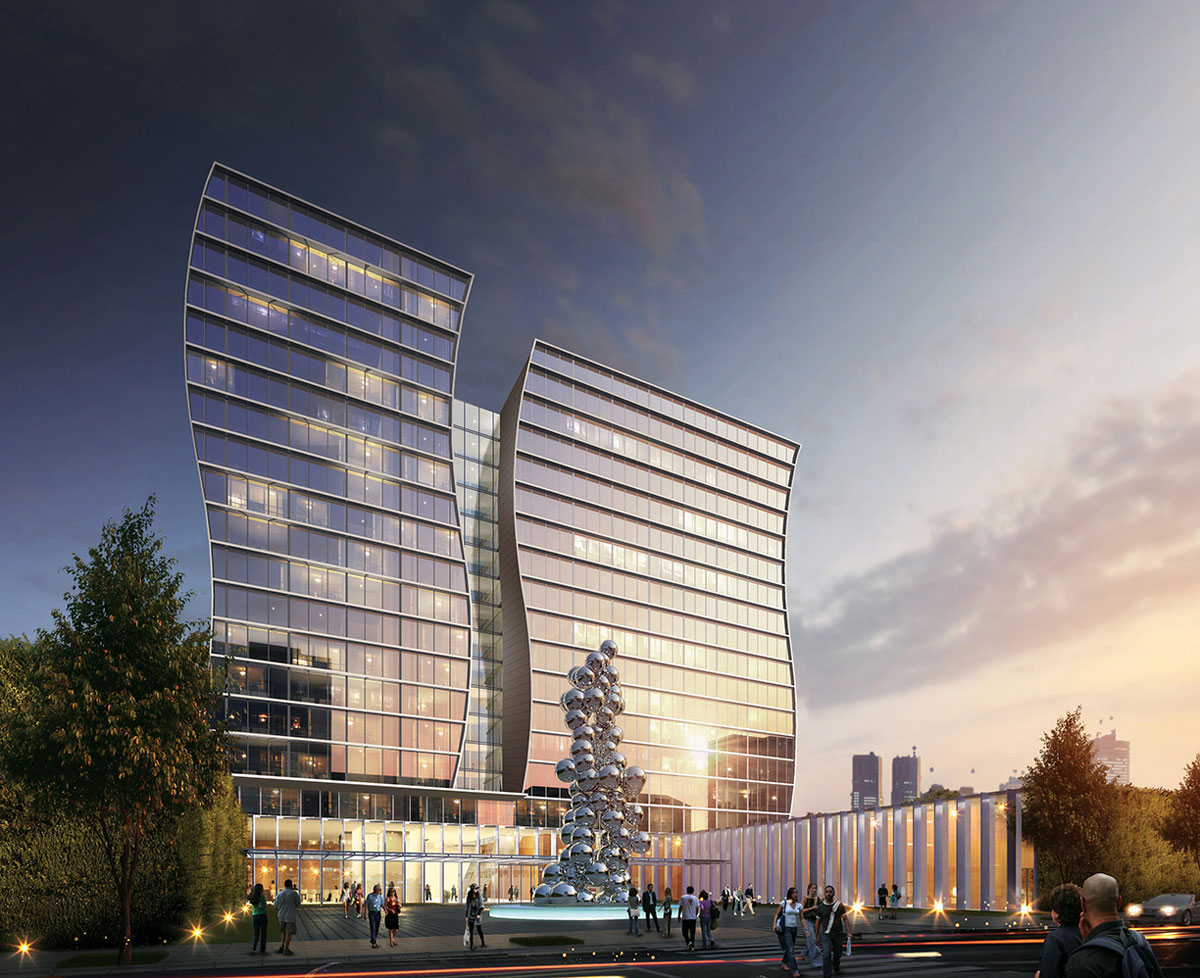
Courtesy Arquitectonica
Not too long ago, the siren call of the South was fun in the sun. Miles of coastline might translate into some of the most desirable second home and resort locations in the county, but more than fun in the sun is creating vibrant real estate markets. Instead, catalysts are strong fundamentals, new job opportunities and investments in infrastructure. Cities are reorganizing, and a number, such as Atlanta, Nashville and Charleston, have risen to new prominence, nationally. Fledgling tech hubs are being incubated, and no matter where you look, new neighborhoods and master-planned communities are on the rise.
Ten years ago, a few prognosticators speculated it could possibly take more than a decade, if ever, for Florida properties to recover from the recession. Today, real estate is thriving in cities across the South from Florida to Texas. Coming out of the recession, Dallas, Houston and Austin set the pace with some of the country’s best real estate markets. Atlanta, Austin, Dallas, Nashville, Raleigh/Durham and Charlotte all number in Urban Land Institute’s top 10 markets to watch and are believed to have excellent overall prospects for real estate in 2017.
Florida
Boom times may not quite be back, but Florida markets have racked up an impressive record in recent years. July marked the 68th month of increases in median prices statewide with single-family prices up 7.1 percent and condo and townhouse prices up 6.8 percent. Florida’s economy is expected to grow faster than the national economy with the gross state product reaching $1.074 trillion by 2019, according to a forecast from the Institute for Competitiveness at the University of Central Florida. Based on current rankings by the World Bank, that number today would make Florida’s economy the 16th largest in the world.
Seven of the top 10 fastest growing cities in the U.S. are in the Sunshine State. Orlando is booming, ranking at the top of Forbes cities with the highest projected job growth, boosted by a growing technology sector as well as innovative strategies such as Creative Village, which integrates education and high tech in a single setting. It also will be one of the largest transit-oriented developments in central Florida.
Orlando recently placed second in the nation for single-family home sales. “It is definitely Orlando’s time, and it’s a confluence of many different factors,” observes Jessi Blakley, director of communications and public relations for Tavistock Development Company, the developer of Lake Nona, one of the fastest growing communities in the U.S.
New projects in the pipeline for Lake Nona include a $400 million training and innovation center for KPMG and an Amazon high-tech fulfillment center. Also on the drawing board is a mixed-use luxury development that includes an 11-acre Crystal Lagoon, dynamic town center, art installations and a hotel designed by Miami’s Arquitectonica. The location adjacent to Lake Nona’s Medical City, a 650-acre health and life science park comprised of several hospitals, academic institutions and bioscience facilities, underscores a growing emphasis on wellness. “We consider ourselves to be a living lab, so you are going to see innovation across the entire community. And that’s going to be everything from our healthy homes to a partnership with Delos,” says Blakley.
Nowhere is the luxury story quite like that of Miami’s, where a legion of international starchitects have remade the skyline with visionary new towers, including residential projects from luxury brands such as Porsche Design, Armani and Fendi. Condo construction is now a multi-billion-dollar industry. Since 2011, 86 new towers, and 8,749 units have been completed east of I-95 in Miami Dade County.
Mega projects including the Brickell Center, Miami Worldcenter, and City Place Doral are reviving sections of the city and enhancing Miami’s status as a retail hub for the Americas.
This year, Miami’s ultra market moved from sizzle to simmer. “The year of the buyer” is how Ben Brissi, an agent with EWM Realty International in Miami, characterizes 2017. “With the third quarter underway, we are still seeing a high supply of inventory, which provides great opportunities for buyers,” he says.
Sellers are taking notice. They are “becoming more realistic with pricing, especially at the top of the market,” shares Coral Gables Realtor and Chair of the Miami Association of Realtors Christopher Zoller. New construction is excluded from Miami Realtor data, but sales of existing luxury condos surged in July, and overall single-family home prices have increased for 68 consecutive months. Prices for sales of existing condos have increased for 71 of the last 74 months.
Although “the season” still holds sway in enclaves like Palm Beach, Manalapan, Miami Beach and Naples, many brokers see fundamental shifts underway. Summer is usually quiet, but this year Florida Realtors say they have been busy. “There was a definite pickup this summer. From a purchase standpoint, I am seeing a shift from a seasonal to year-round. People look in the early season, but they come back in the summer to buy,” says Tade Bua-Bell, a broker associate at John R. Wood Properties in Naples. “More people are lengthening their stay, often to eight months. We’re also finding lots of kids coming in the summer.”
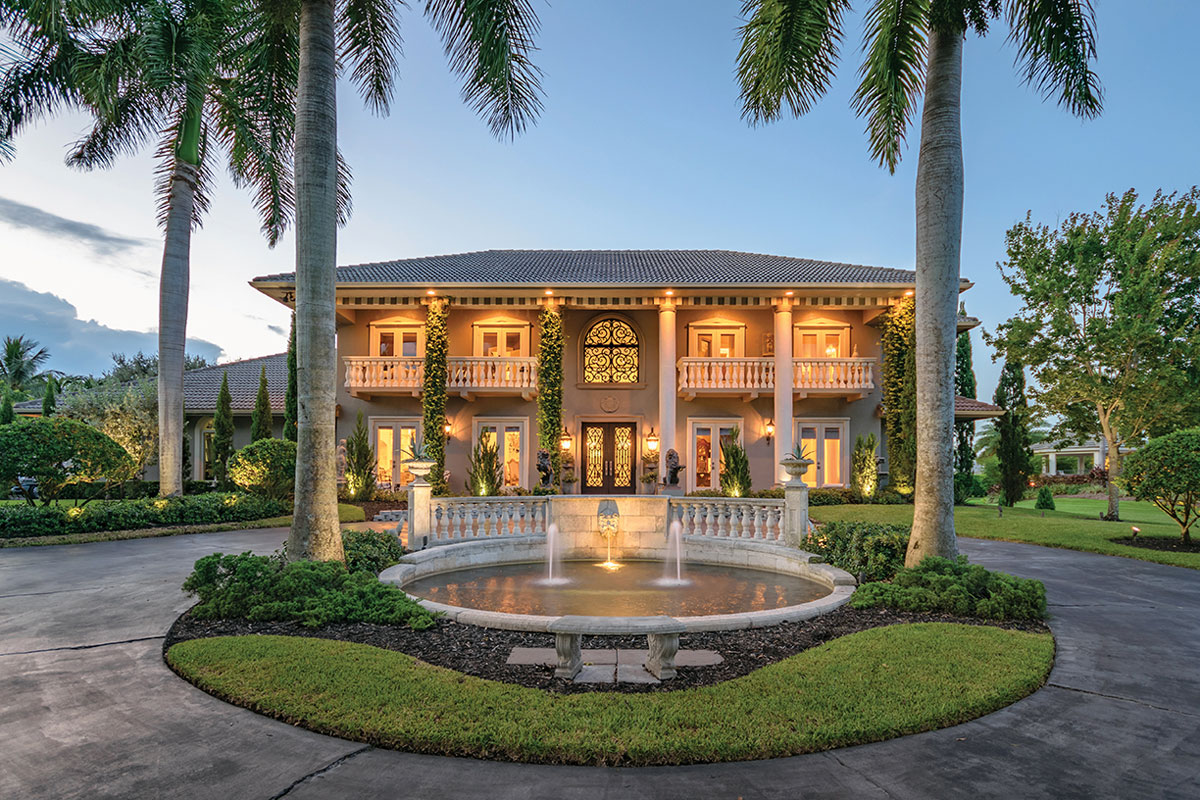

Courtesy The Fite Group Luxury Homes ERA Powered and ©edzakphoto.com
“The season is elongating. Now it’s starting out in October, and many are not leaving until late spring or early June. It is much busier in the summer,” says David Fite, principal of The Fite Group Luxury Homes ERA Powered in Palm Beach.
“We really don’t have a season anymore,” says Brenda Donnelly, a Luxury Collection specialist with Berkshire Hathaway HomeServices Knight & Gardner Realty in Key West. “Every month we have a festival of some sort; we are really a year-round vacation resort.” Donnelly, who also owns Historic Key West Vacation Rentals, says the market is booming, with a limited inventory and so many renovations that it can take six to eight months to get a builder. The potential for long-term rentals, here and in other resort settings, is becoming an added incentive to purchase.
Bua-Bell says, “We had a lot of big sales this summer over $10 million. People are purchasing a little more.” The reason, she says, is simple: “People just want to live their lives. People aren’t just buying real estate, they are buying lifestyle. There are only so many warm places where people can go.”
Another shift in the Sunshine State is toward year-round communities. “Our impression is there are many people now moving to Palm Beach County full time, who 10 to 15 years ago would have been snowbirds,” says Fite. More than $2 billion in development and 1,000 residential units downtown are expected to come online in West Palm Beach.
Most Expensive Listings
Palm Beach area: $195 million compound in Manalapan.
Miami: $150 million for 4 waterfront lots on exclusive Indian Creek Island; a $65 million estate on Star Island is available for the first time in 30 years.
Orlando: $7.588 million in Golden Oak at Walt Disney World Resort, with access to the Four Seasons Resort Orlando.
Naples: $65 million estate on 4.08 beachfront acres.
Also notable: $26.5 million estate on Longboat Key.
Design Miami
“Right now, the condo market in Miami has really taken a swing; it is much more modern. Lobbies are sparser,” with many more amenities, says Kevin Gray, owner of Kevin Gray Design. Hotel services are popular although Gray finds clients often see that as an invasion of privacy.
“Architecture is becoming cleaner,” he observes. The preference for kitchens is white lacquer cabinets that open upwards. Additionally, in both New York and Miami, homeowners want ecofriendly materials. “For a while everyone loved the white marble floors or terra cotta. Today, people are doing composite materials, and you can hardly tell the difference,” says Gray.
Lighting has become important in the upscale market, and instead of the fixture the focus is on the lighting itself. “People are more aware of the quality of the lighting and of good lights, he says, pointing to new LEDs. Also “taking off like wildfire” are square recessed lights. “No one wants round anymore,” he says. On the horizon, look for more casings lined with black instead of white.

Courtesy The Fite Group Luxury Homes ERA Powered
Georgia
The story here is population growth as existing companies add new jobs and the promise of top talent from Georgia Tech and Emory University lure new enterprises to the area. Recently, Atlanta was celebrated as the top city for making movies, and the film business adds to both state coffers and the city’s luxury cachet.
An old nickname for Atlanta was “The City of Love,” and newcomers here are finding a lot more to love thanks to infrastructure enhancements and an urban revitalization that promises to roll from midtown to downtown. Buckhead remains the city’s prime luxury enclave, but many other areas are acquiring a luxury persona. “Midtown is on fire,” says Christa Huffstickler, owner of Engel & Völkers Atlanta, pointing to new luxury towers, sidewalk cafes and restaurants, even a food and wine festive. “Finally, it feels like a real city. We are going to see a shift, and, in the next 10 to 15 years, downtown will be as vibrant as midtown is now.”
Another big transformation is the development of the Beltline, which is similar to New York’s High Line. Even though only several miles are complete, residents can already see how it will change the city. “We are seeing developers gravitating to the Beltline. It’s going to become as important of a draw for consumers as Buckhead. And our city has been starving for that connectivity.”
Atlanta has been a city of suburbs and those markets are still in demand, but new condo offerings beckon people back to town. “When our real estate cycle came back, we saw a shift in the condo market and a transition in what that product offered. There was more thoughtful design, smaller boutique-sized buildings, and more square footage. Rather than first-time buyers, they were oriented toward a move-up market as well as downsizers.”
Most expensive listing in Atlanta: $15.8 million Mediterranean estate in Buckhead.
South Carolina
Stop in any small-town coffee shop along coastal South Carolina, and there is a good chance you will encounter newcomers meeting with real estate agents, and there is no better testimony to vibrancy of real estate in coastal resort locales as well as farther inland. Home values in South Carolina increased by 5.5 percent over the last year, and predictions call for an additional 3.5-percent rise next year. New resort developments such as Palmetto Bluff and classics like Hilton Head bring vacation buyers and full-time residents. Master-planned communities are in the works statewide, but the biggest news for upscale real estate has got to be how much Charleston’s star has risen in the luxury firmament.
Charleston has always been a top southern destination, but the city’s ascendancy to the luxury elite this year is undeniable. From Top Chef to Travel + Leisure, it seems to be on everyone’s list of top markets, including Unique Homes’ annual “Markets to Watch.” Christie’s ranks Charleston fifth, ahead of Paris; Portland, Oregon; and Sydney on its Luxury Thermometer, a gauge based on demand and growth. Austin and San Francisco outpaced Charleston at fourth and third.
“Charleston has always stayed ahead of most areas just because of how desirable it is. When other areas are depressed, Charleston comes along at a decent pace, because of the draw of history, beaches and the overall charm of the Lowcountry,” says Michael Robert Smith with Berkshire Hathaway HomeServices Carolina Sun Real Estate. Lower taxes are another incentive for businesses to relocate here, and a growing tech section is bringing more millennials to the area. From antique residences along The Battery to oceanfront at Kiawah Island, the range of luxury housing here is amazing.
There is a lot of new construction, particularly away from the water. But the big news for some perspective residents, according to Smith, is “the Low Country is still affordable. West of Charleston you might be able to get a mansion for $500,000.”
Charlotte, North Carolina
Although Raleigh-Durham has been the epicenter for growth in the Carolinas, the push now is to revitalize uptown Charlotte with new cultural venues, educational institutions, parks, walkable streets, new housing, and retail.
The light rail added in 2007 led to a boom of apartments and retail in the South End that is expected to be replicated in NoDa and the University area as the rail expands north of Uptown. Charlotte also aligns with a national trend in developing cities, in which luxury rentals are offering a huge range of amenities, pet perks and a high level of design within individual units.
Also included in the remake of city center Charlotte are a number of parks, including Romare Beardon Park, adjacent to a new minor league baseball park and the Carolina Panthers football stadium. Jump starting the refurbishment of nearby Stonewall Street is Crescent Communities’ new mixed-use development, Stonewall Station. Plans call for two hotels, a Whole Foods Market and upscale apartments.
Most expensive listing in Charlotte: $6.3 million set on 20 acres in South Charlotte.
Cinnamon Shore, Texas
New resorts are a rarity these days, but a well-established vacation community for Texans along the gulf holds the promise of rivaling those in Florida and the Carolinas. Located on Port Aransas and Mustang Island, an 18-mile island near Corpus Christi, Cinnamon Shore is slated for a $1.3 billion, two-phase expansion, which in the next decade will include new two-to-five-bedroom vacation homes, an upscale boutique hotel and a 10-acre lake ringed by a mile-long boardwalk.
Plans call for approximately 3,300 of beachfront, triple the size of the current beach at Cinnamon Shore, as well as a town center with retail, dining and entertainment. Organized around the concept of New Urbanism, the community will be the kind of place where front porches energize connections and kids can be kids.
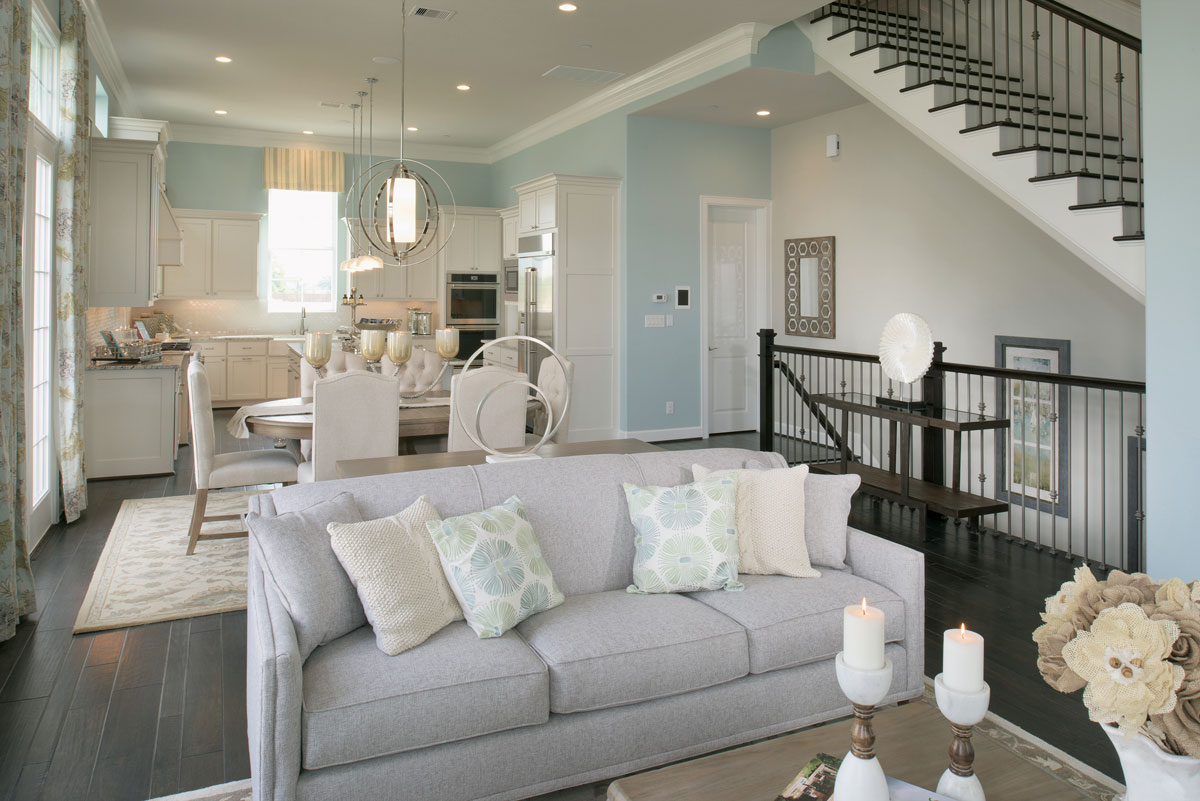
Courtesy of Toll Brothers
New Home Designs in Texas
For Texas homeowners, particularly downsizers, collected interiors that include items with a personal meaning or story are important. “We do see a yearning from people wanting that authenticity,” says Kate Brennan, director of accounts at Mary Cook Associates, a Chicago architecture and design firm that works with homebuilders nationally. For empty nesters, it might be something acquired on a trip or a collection. “It is often something that has a story that relates to them,” says Brennan. In the Lone Star State, rustic elements are also desired, but, Brennan adds, with clean lines so the end result is “sophisticated and collected.” The indoor-outdoor connection is important in Texas and it continues to be refined. Look for more seamless applications of finishes to connect the two spaces.
Both downsizers and Millennials like single-level floor plans. “People downsizing are looking for a place that will promote health and wellness,” she says. Boomers are looking ahead and they want homes that will support future transitions. Millennials also like single-level floor plans because they are easy to maintain. But they want flexible open plans that can be adapted to their individual lifestyle.
The 234-acre experiential development commits to utilizing clean, geothermal energy for all single-family residences and townhouses.
Pinewood Forrest, a new, innovative urban community in Fayetteville, Georgia, today announced plans to become the first large-scale fully geothermal community in the country. Every single-family home and townhouse in the community, which is currently under construction, is being outfitted with a geothermal heat pump system in place of a traditional HVAC system. Geothermal power uses the consistent temperature just below the Earth’s surface to heat and cool homes and is more efficient, more affordable, quieter and lasts longer than any other system. Pinewood Forrest recently released an informative video outlining the benefits of geothermal.
Geothermal is a clean, renewable energy source generated and stored in the Earth. To access this energy, a hole is drilled to reach the level where there is a consistent underground temperature of approximately 58 degrees year-round. Geothermal underground heat pump systems take advantage of this stable temperature to more efficiently heat and cool homes compared to traditional HVAC systems, which are above ground and exposed to more variable and extreme conditions. Geothermal systems offer up to 70 percent energy cost savings – that’s more than $200 off a $300 electric bill – and are more durable and long-lasting, with underground components potentially lasting beyond 50 years compared to around 12 years with traditional systems.
“Our vision for this community includes providing residents with the most advanced technologies and systems available to make this a truly remarkable place to live. Geothermal energy is the smartest, most effective way to heat and cool a home, and we are delighted to bring this innovative, future-proof solution to Pinewood Forrest,” says Rob Parker, President, Pinewood Forrest. “The collective power of immediate and meaningful cost savings paired with the undeniable environmental benefits delivers a smarter, healthier, more livable community to our residents now and gives them confidence and peace of mind for the future.”
The sustainably-designed development will include around 700 single-family homes and townhouses. Construction started on homes in April 2017, and the first phase will be delivered and occupied by year-end. Most costs for the systems are factored into residents’ mortgage payments.
In addition to environmental benefits, geothermal systems provide significant aesthetic advantages. Because there are no outdoor compressor units and the underground systems are virtually silent, residents can relax and enjoy inspiration from the natural environment and surroundings within Pinewood Forrest and time with family and friends without the distraction of noise or unsightly industrial equipment. Pinewood Forrest is connected by 15 miles of pedestrian pathways spread over 118 acres of public green space with gardens, gathering places and parks.
For more information on residences at Pinewood Forrest, visit www.pinewoodforrestrealestate.
Water views or frontage have consistently been desirable real estate attributes for as long as anyone can remember. Whether your home offers breathtaking vistas out upon the open sea or a tranquil setting with frontage to a babbling river, there aren’t too many who would object to owning a luxury, waterfront property. With this desire to be by the water, however, many buyers seeking frontage are finding that waves of change are taking place along the coasts in the form of rejuvenation and reconstruction.
By Kristen Ordonez
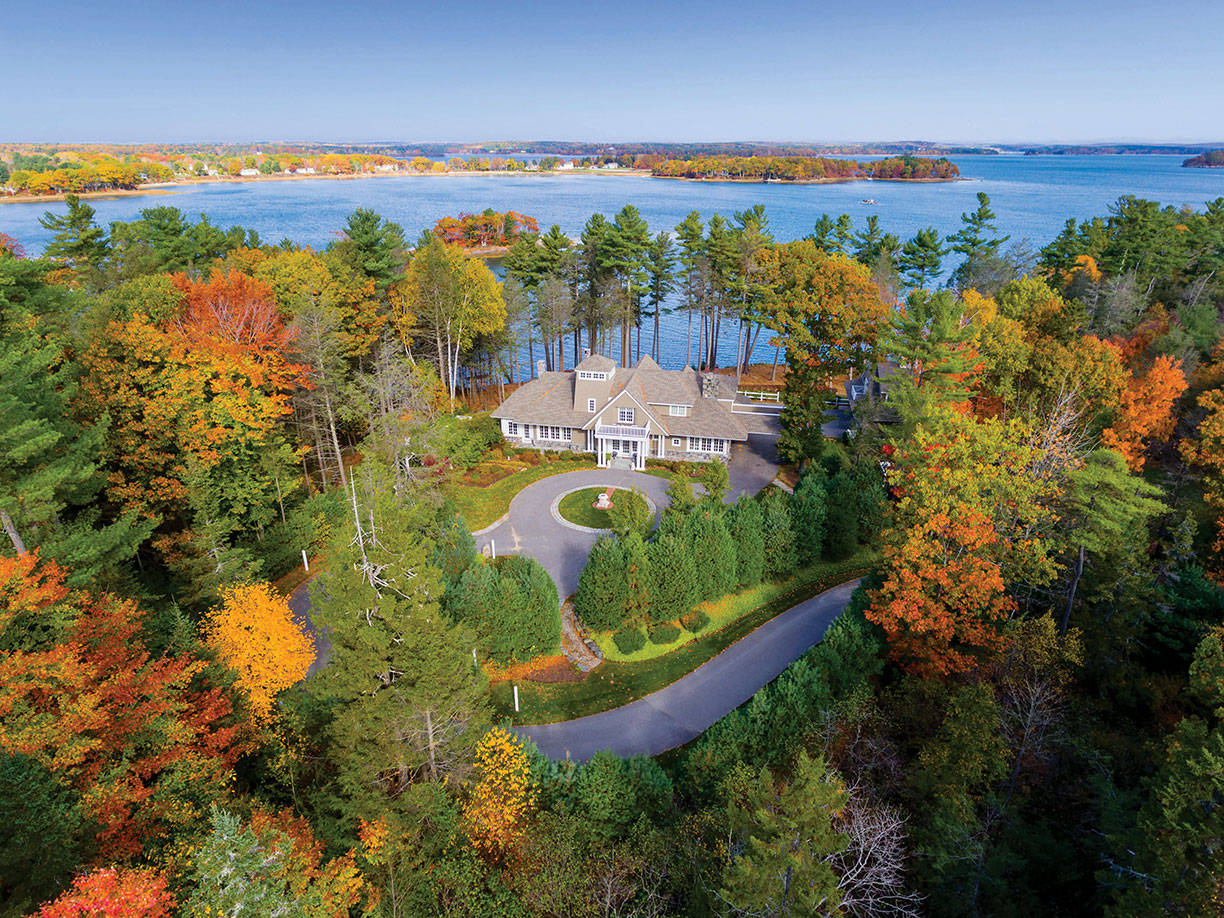
Photo courtesy of Soaring Imagery
Portland, Maine
Soaking in the views of Casco Bay, the greater Portland area offers much to be desired in the line of luxury waterfront properties — ranging from $2 million to $5 million — whether along the rocky coastline, open ocean or somewhere near the bay for easy boat docking. The highest sale in the greater Portland area in the last year was $4.05 million, according to Bob Knecht, Broker for Town and Shore Associates. Though the amount of waterfront space is limited, the possibilities to redesign and rebuild are fervent throughout the area.
“Maine is a very old state,” Knecht remarks. “It provides an interesting mix of old cottages and old estates with grand cottages, island cottages, new homes and remodeled homes.” People will often take an older waterfront home and renovate it; “you can’t change the location, but you can change the house,” says Knecht, a method that provides a lot of inventory and an overall healthy real estate market.
David Banks of RE/MAX By the Bay focuses on the towns of Harpswell and Brunswick, about 30 minutes north of Portland, which still present opportunities for waterfront properties under $1 million. He also notes that in the rocky coastline of Cape Elizabeth, just south of Portland, properties range from $3 million to $6 million, while in other towns north of Portland the waterfront prices range from $2 million to $6 million and include more areas for boating, dockage and privacy. Banks reports that the highest-priced waterfront listing is $11 million.
After “converting from a manufacturing state to an information state,” according to Knecht, Maine is the “number one luxury state in the country,” offering the largest income in tourism, great school systems and a “wonderful quality of life.”
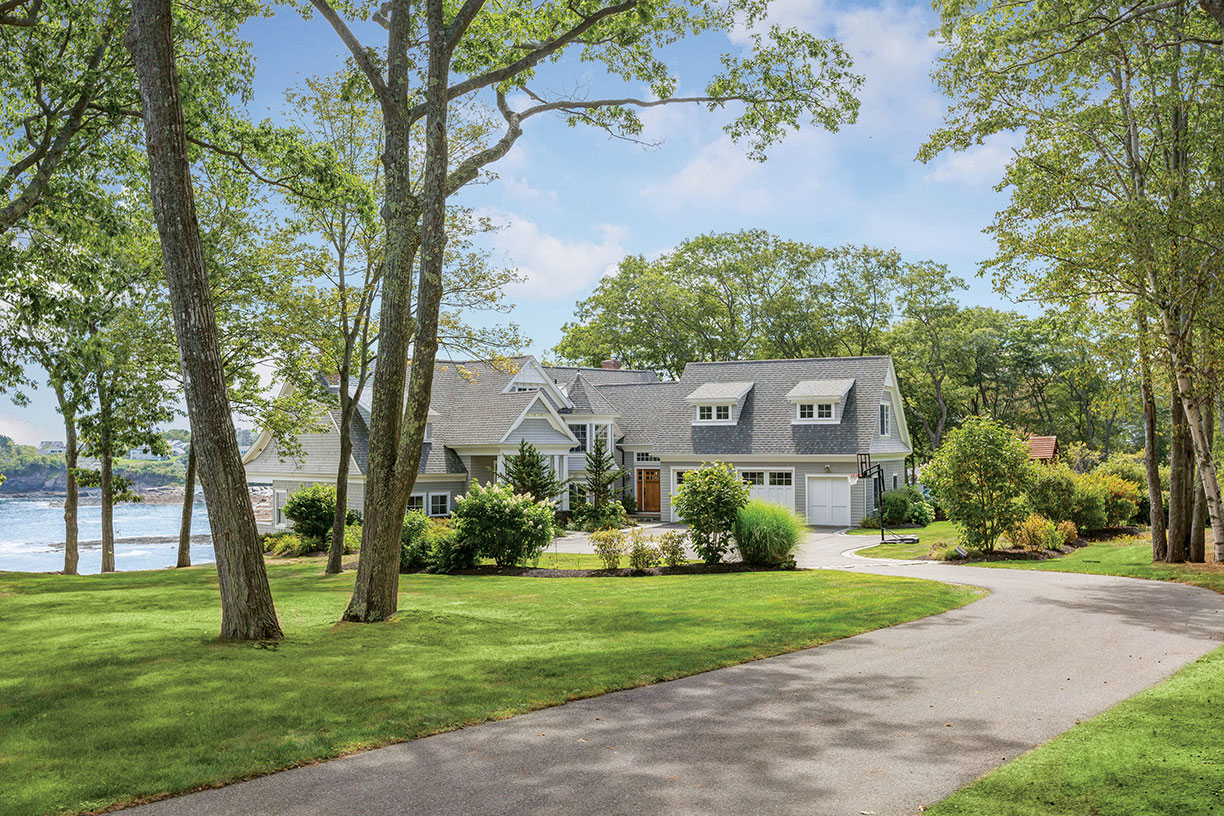
Exquisite Shingle-style home with broad ocean views in Cape Elizabeth, Maine. Photo courtesy of Lynne Dube.
Lake Burton, Georgia
Realtor Julie Barnett from Harry Norman, Realtors knows the ins and outs of Lake Burton, and how water frontage plays a major role in the Georgia real estate market. Located only 90 minutes from Atlanta, most buyers come locally from Georgia
or Florida, according to Barnett, to “escape the summer heat.”
“Lake Burton is a boutique situation,” says Barnett. “It is 2,775 acres with 62 miles of shoreline nestled in the foothills of the Appalachian Mountains.” The location is very tranquil with cool, crystal clear water that lets you see straight to the bottom, as well as a 10-degree temperature difference compared to Atlanta. Apart from the lake are the properties in the vicinity, which according to Barnett vary in price depending on their purpose.
Similar to Portland, Lake Burton affords both tear-down lots and luxury new constructions. “Our properties range from $700,000 to $1 million for tear-down fishing cabins, and up to $6.4 million for a luxury estate,” says Barnett, a sizable difference from last year when the range was between $479,000 and $5.9 million. And with these lots becoming available, $3+ million homes are being built in their place. Because of this consistent remove-and-replace pattern of construction, each year the inventory of homes over $2 million increases.
The highest-priced home on the market in Lake Burton is one of Barnett’s listings, priced at $6.4 million. The 1.2-acre property features mountain, lake, and sunset views and belongs to country music star Alan Jackson.
St. Augustine, Florida
For buyers in St. Augustine, the choice between either water frontage to the ocean or the Intracoastal Waterway is one of the easier decisions to make. This resort town on the northeast coast of Florida has a unique real estate market compared to the markets in the “big cities,” according to Stefanie Bernstein of Berkshire Hathaway HomeServices Florida Network Realty.
Because of the large inventory of second homes that were built in the 1980s and early ’90s, “most buyers do not find what they want with a resale,” and turn to a tear-down and reconstruction deal. These kinds of opportunities provide cheaper options for those looking for new construction possibilities, which is appealing to those who are willing to build or pay higher prices for newer homes. Bernstein notes that because of its “small-town” status, many buyers are from Florida, while others travel down from states like Ohio, New York, New Jersey, Connecticut and even Vermont.
Generally, the price range for waterfront homes starts at about $800,000 for properties with ocean frontage, and $550,000 for Intracoastal frontage. The average prices for the more expensive homes in the area are within the $3 million range. One of the highest priced homes in St. Augustine is over $4.2 million, according to Bernstein, and is reminiscent of the Taj Mahal.
Lake Arrowhead, California
Nestled in the hills of San Bernadino National Forest, luxury homes scattered along or near the shores of Lake Arrowhead tend to fill the vacation home capacity, according to Vicki Smith, Broker Associate at Coldwell Banker Sky Ridge Realty. “We have such a variety of luxury homes here, the plan is to match the buyers with homes that work for them,” Smith says. According to her, a large percentage of these homes are vacation homes for people who live in other parts of Southern California, especially Los Angeles/Beverly Hills, Orange County, San Diego County and the desert areas of Palm Springs and Rancho Mirage.
While there are enough high-end lakefront listings, Smith notes that all the areas around the lake are already built on, so not many new homes can be newly built and not every buyer gets exactly what they are looking for. Instead, most of the older, vintage homes are getting remodeled or refurbished in order to keep up with buyers’ needs. “We could use more lakefront homes on the market between the $2 million to $3 million range,” says Smith.
At this time, the highest-priced home in Lake Arrowhead is an $11.8 million listing by Smith, which is “an extraordinary home on its own private peninsula.” For those looking for luxury properties in the area. but not necessarily on the lake, these homes start around $500,000. Prices for lakefront homes are broken up differently depending on the remodeling process.
“For $900,000 to $1.5 million you can purchase a small (1,500 to 2,000-square-foot) vintage home that probably needs some work. For $1.5 million to $2.5 million, you can purchase a larger lakefront home (3,000 to 4,000 square feet) that has had some remodeling done, but today’s buyer will probably want to do additional upgrades. And for over $2.5 million you can get a beautiful home,” says Smith.
Lake Tahoe, Nevada
The tear-down, rebuild construction plan is how most buyers get away with finding or creating their perfect luxury home along the shores of Lake Tahoe. According to Shari Chase of Chase International Real Estate, there are no subdivisions or new developments for the most part in the waterfront area of Lake Tahoe due to the land preservations and protections.
“On the Nevada side of the lake, over 95 percent of the land itself is owned by government agencies,” Chase states, affirming that the land is “very precious.” Due to these protections, the only way to really create new luxury home opportunities is to buy older homes and either refurbish or tear them down to build new.
Chase notes that most of these buyers, like so many others looking for waterfront properties in the U.S., are looking for a secondary home, or a third or fourth in some cases. Based on the location, most buyers of these properties hail from the San Francisco Bay Area and even Los Angeles.
Price points vary depending on home distinction, such as a condominium or townhome compared to a single-family home, according to Chase. On average, in today’s market, the minimum on-the-water price is between $4 million to $10 million. The newest home on the market in the Lake Tahoe region is one of Chase’s, a $75 million residence in Crystal Pointe, Nevada with 525 feet of waterfront and the highest price in the area.
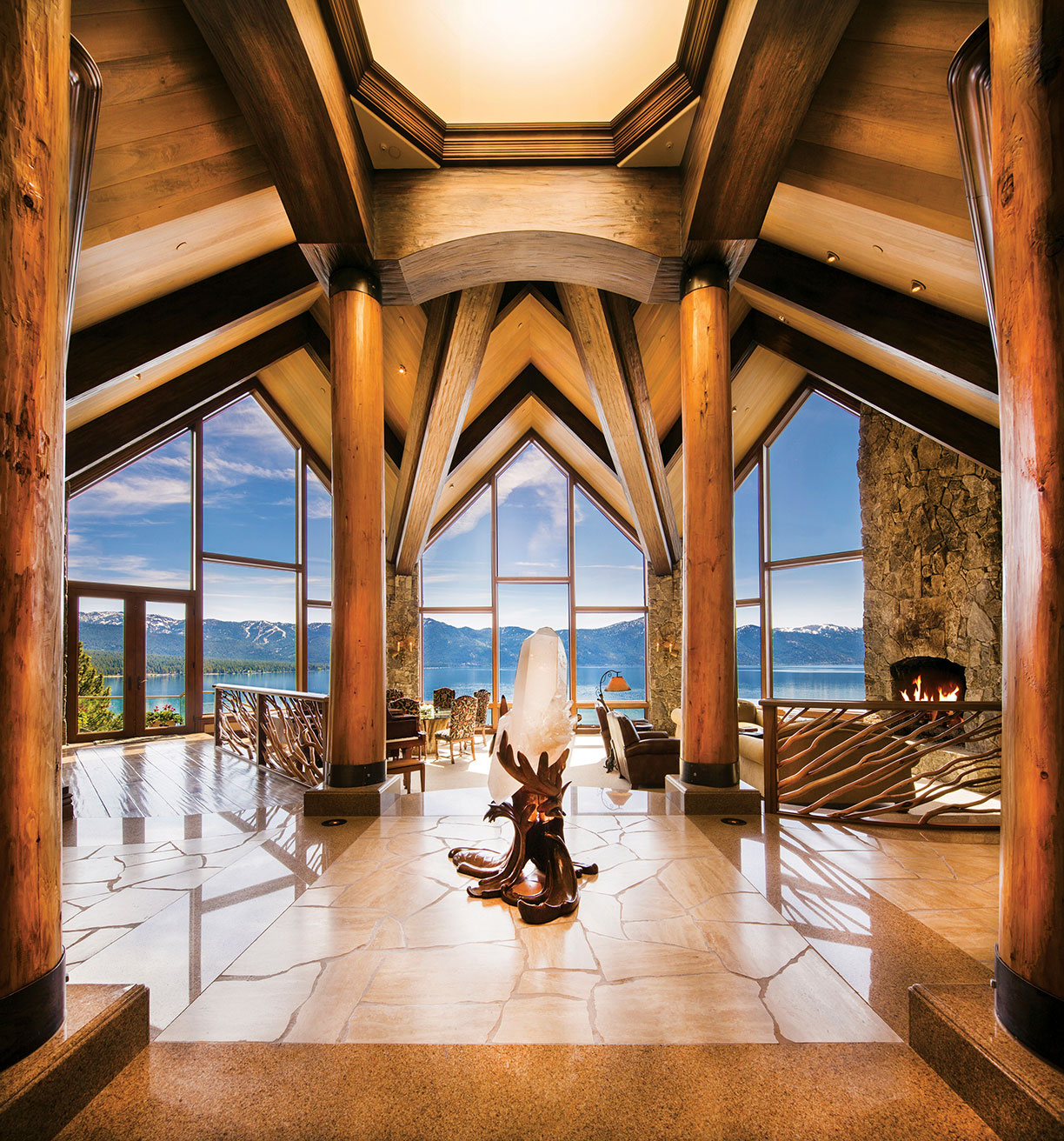
The captivating views from this $75 million listing in Crystal Pointe are what Chase refers to as “epic, energetic and empowering.” Photo courtesy of Jeff Dow.
Pines Lake, Wayne, New Jersey
Northwest New Jersey is a region that provides many popular lakes and private lake communities with memberships to private beaches, tennis courts, sailing and an assortment of other social activities. Two popular communities in particular, Pines Lake and Packanack Lake, are found in Wayne, New Jersey, and have been around as early as the 1930s, according to Carole “Lynn” Brescia, broker/sales associate for Coldwell Banker Residential Brokerage.
Originally starting as summer lake communities in the ’30s through the ’50s, these places have evolved over time into year-round communities, Brescia states. “Older homes are now being renovated and expanded, or torn down and replaced by larger, new homes that focus on the water views and lakefront access,” Brescia says.
Keeping with the trend of buying a vacation home close to home, most buyers are local and move up to a lakefront location for the views, the water access and the lifestyle. Many of them have specifically identified the community, Brescia notes, and “wait for the right location or property.” Some buyers are occasionally from out of state and “fall in love with the beauty of the lakes area and choose the lifestyle of being able to enjoy kayaking, sailing, paddle boarding and swimming.”
On the water in Pines Lake, the starting price for a rebuild or redesign is just under $1 million, depending on the size of a lot. A recent piece of land sold for over $3 million, and according to Brescia there are more opportunities up for grabs. “Currently there are renovated and newer homes between $1.3 million and $2.8 million,” says Brescia.
This story originally appeared in Unique Homes Summer 2017.


